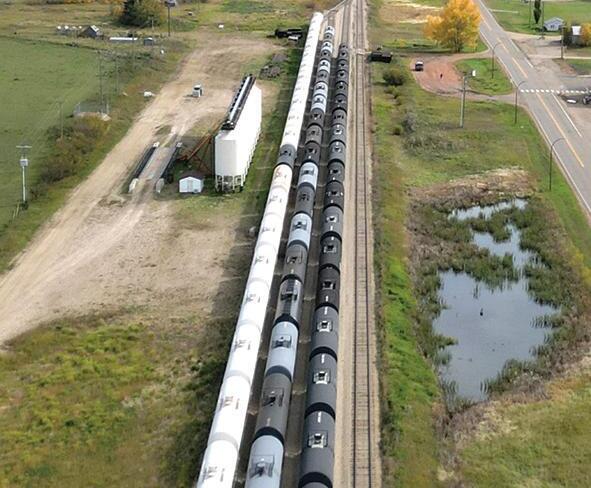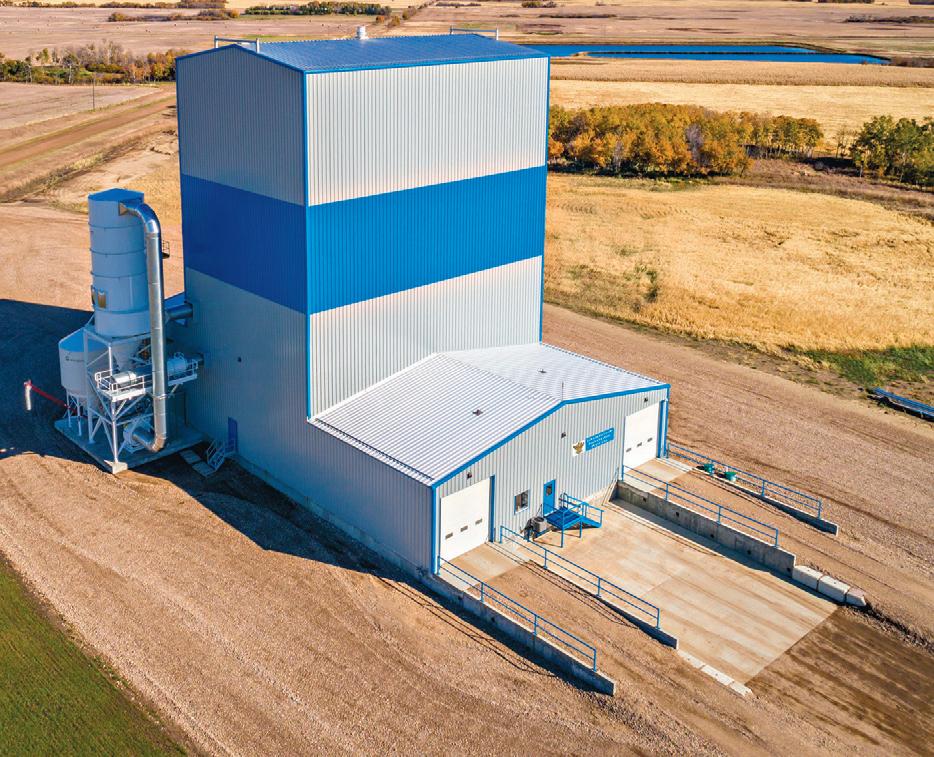Agriculture Section Agriculture Section 2025



An annual supplement to your local papers saluting the important businesses and people keeping our ag industry strong





























































































































































































































































































































































































An annual supplement to your local papers saluting the important businesses and people keeping our ag industry strong

























































































































































































































































































































































































Cassandra Lundbek Staff Reporter
March was the month recognized as Pet Poison Prevention Month, dedicated to raising awareness about the dangers that common household and environmental toxins pose to our animals. With nine out of ten pet poisonings occurring within the home, and incidents increasing around festive seasons like Easter, Halloween, and Christmas, it’s vital to understand which substances can be harmful to your pets, whether they’re dogs, cats, or horses. Recognizing these risks is key to safeguarding your pets.
Unfortunately, pet poisoning is frequently an emergency, often caused by every day items that owners may not recognize as dangerous. West Wind Veterinary Hospital recommends taking the following steps for prevention: take an hour to assess risks and pet-proof your home and barn, ask a veterinarian before giving any medications, store all medications and potential toxins safely, and ensure everything your animals might be able to eat is safe.
“Poisons are best treated by prevention of exposure. If accidental exposure occurs, treatment should be started before any symptoms are noticed,” warns Dr. Deborah Carroll of West Wind Veterinary Hospital.
For dogs and cats, over-the-counter and prescription medications are
among the leading causes of poisoning. Human medications such as pain relievers, antidepressants, and even vitamins can have toxic effects on pets. Xylitol, an artificial sweetener found in many sugar-free items and some peanut butter brands, is highly toxic to dogs and can cause severe hypoglycemia and liver failure. Foods like chocolate, grapes, onions, garlic, and raisins can be deadly, leading to kidney failure, anemia, or neurological issues. Household products such as antifreeze, rodenticides, and cleaning agents also pose serious risks.
With gardening season just around the corner, it’s important to research any plants you plan to bring into your home or garden. Ingesting plants like aloe, daffodils, azaleas, and English ivy can cause vomiting, diarrhea, lethargy, or more severe symptoms in pets. Some plants, like lilies, are highly toxic to cats and can cause fatal kidney failure. For horse owners, toxic plants and environmental hazards are a significant concern.
“All pastures should be inspected for weeds and other hazards before use. All feed changes should be gradual,” Dr. Carroll advises.
Alsike clover, while not native to Canada, was introduced in the 1800s and can be found in pastures, along roadsides, and in ditches throughout Alberta. It can cause photosensitivity

and liver damage in horses. Maple and Box Elder trees also pose a risk, as wilted leaves can lead to severe anemia in horses. Even black walnut shavings, sometimes used in bedding, can induce laminitis.
It is important to consider the placement and use of pesticides and rodenticides around barns and homes, as they can be fatal if ingested by pets. Additionally, contaminated feed, such as hay containing botulinum toxins from decaying organic matter, can lead to severe neurological damage in horses. Symptoms of poisoning in horses vary widely but may include colic, muscle tremors, incoordination, or sudden behavioral changes.
As we move into the warmer months, concerns about blue-green algae become more prevalent. This toxic algae can bloom in stagnant or slow-moving water, such as dugouts, ponds, and lakes, posing a significant health threat to dogs, cats, and horses. Dogs are especially vulnerable due to their tendency to swim and drink from natural water sources. Horses can be exposed when drinking from contaminated troughs or bodies of water.
Blue-green algae produce toxins that affect multiple organ systems, causing symptoms such as vomiting, diarrhea,
muscle tremors, seizures, liver failure, and even sudden death. If exposure is suspected, immediate veterinary attention is crucial.
“The most common error is waiting too long before seeking veterinary advice,” says Dr. Carroll.
Quick action can mean the difference between life and death. If poisoning is suspected, owners should immediately contact their veterinarian or an emergency poison control hotline, such as the ASPCA Animal Poison Control Centre or the Pet Poison Helpline, both available 24/7. Note that consultation fees may apply.
Prevention is the best defense against poisoning. Pet owners should store all medications, chemicals, and toxic foods safely out of reach. Regularly inspecting pastures for harmful plants, securing feed and supplements, and avoiding exposure to pesticides, herbicides, and toxic algae can help protect horses. Being mindful of potential hazards around the home, barn, and farm can go a long way in ensuring the health and safety of all animals.
This spring, take the time to assess your environment and make any necessary changes to keep your pets and livestock safe from harm.

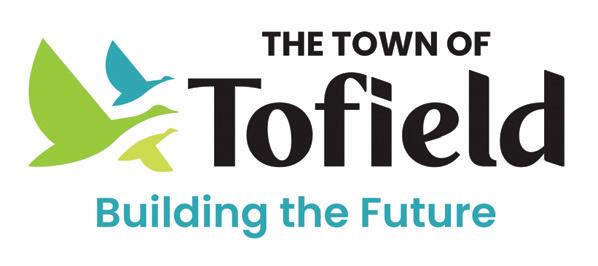
community





• 4712 51 St Lamont 5,800 sq ft shop with office and sales space. Shop was used for agricultural machinery repair. Price: $450,000
• HWY 834 between HWY 16 and TWP RD 530 Lamont County 19.48 acres with power and a holding tank. Nice building site. Price: $215,000.00

• 5317-50 Ave Andrew. An 18,000 sq. ft. manufacturing shop with office and storage space on 2.3 acres of land Price: $1,700,000
• Parts of SW and SE-7-53-22-W4 located at Highway 21 and Lakeland drive 63.62 acres of development land with Highway 21exposure. The property is within the Bremner and local Employment Area ACP with expected future use of industrial. Price: $5,100,000 We’re Always Looking For New Farm Listings!! Give us a Call, We’d Love To Sell Your Property!
































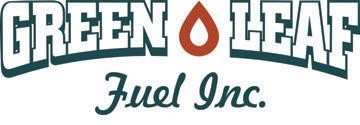











































































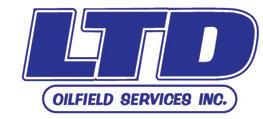



























Leslie Cholowsky
Alberta Agriculture reports that the period between the melting of snow and the emergence of fresh grass and leaves creates the highest risk for spring wildfires.
Last year Alberta’s Agricultural Service Boards released a shelter in place tool meant for municipalities as they prepared for an upcoming fire season.
The document had good advice for making a plan to shelter livestock in place in case of emergency, but also includes advice based on basic FireSmart principles to be applied to every building found on a farm or acreage.
One of the first things to do this spring is to assess your property and outbuildings. Storing items like piles of firewood, construction materials (or deconstruction materials), patio furniture, and other combustibles against or near a building can be a major fire hazard, according to FireSmart Canada.
Combustible mulch can ignite, producing embers that could ignite other combustible materials in your yard, increasing the chance of flames spreading to outbuildings or your home.
FireSmart guidelines recommend that evergreen trees, with cones and needles, not be within 10 m of a home or outbuilding.
FireSmart suggests you plan a 1.5 metre area around your outbuildings that is a non-combustible surface, to reduce the chance of wind-borne embers starting a fire.
Materials like gravel, brick, or concrete fit the bill perfectly, while woody shrubs, trees, and tree branches should be avoided. Well-mown grass is also suitable for this zone. A mown lawn is a fireresistant lawn, according to FireSmart guidelines. Grass shorter than 10 cm (around 4”) is less likely to burn.
Plant only fire-resistant plants and shrubs within a 10 m radius, and avoid using bark or pine needle mulches within 10 m of a building. Gravel mulch and decorative crushed rock can significantly reduce your risk of fire.
Regularly clean up accu-
mulations of fallen branches, dry grass, and pine needles from the ground to eliminate surface fuels. Remove all branches to a height of two metres from the ground on evergreens within 30 metres of your buildings.
FireSmart guidelines say that reducing the risk of a surface fire on your farmland includes managing
vegetation around fence lines, corral lines, and ditches. A buildup of grass, weeds, and brush make excellent fuel for wildfires.
Reducing vegetation around buildings lowers the risk of wildfire, same as old corrals and unused corners of the yard.
FireSmart rules around feed storage say that dry bales are a magnet for
sparks and embers. Once ignited, they cause fires that can quickly spread and be difficult to put out. Store bales a good distance away from outbuildings. Clean up old hay and straw from broken bales.
Being prepared for a wildfire may help decrease the chances of a grass or wildland fire causing damages to your buildings.








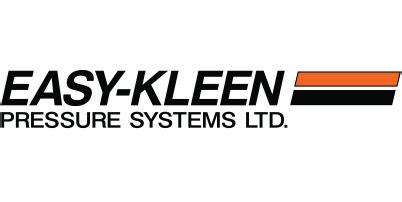











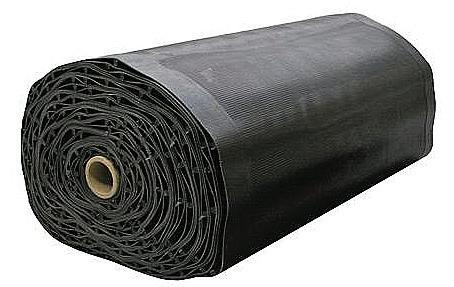

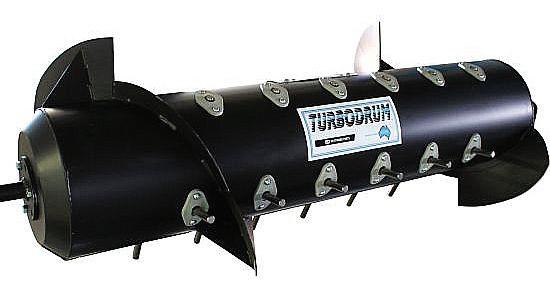


Anna Smith
Local Journalism Initiative Reporter
Budget 2025s new Rural Hospital Enhancement Program would invest about $330 million over three years to support health capital projects in communities across the province.
If passed, Budget 2025 will provide $15 million to support project planning in rural communities, which includes conducting facility and functional assessments of rural hospitals to determine what capital planning solutions and services are required to maximize each facilitys potential, said the province.
Rural Albertans should be able to access the health-care services they need close to home.
The new Rural Hospital Enhancement Program will ensure we are continuing to make data-driven decisions, and that resources are
being appropriately deployed to address the areas with the greatest need, said Minister of Health Adriana Lagrange.
Once project plans for each facility are developed, they will be used to inform future capital planning discussions and funding decisions for new projects, expediting the time between planning and construction.
Alberta’s government is also supporting existing capital programs and projects that will maximize the potential of rural health-care facilities.
The province says these investments aim to ensure that rural patients can receive care in the communities where they reside, reducing the need for long-distance travel to urban centres for essential medical services, reducing the pressure on major centres and support the wellbeing of


rural Albertans.
”As an MLA from rural Alberta, I know first-hand how important it is to have access to high-quality health care facilities close to home,” said Minister of Infrastructure Martin Long in a statement.
“This investment in projects in rural communities across Alberta will enhance care and strengthen our communities. I cannot wait to get to work on these critical projects.”






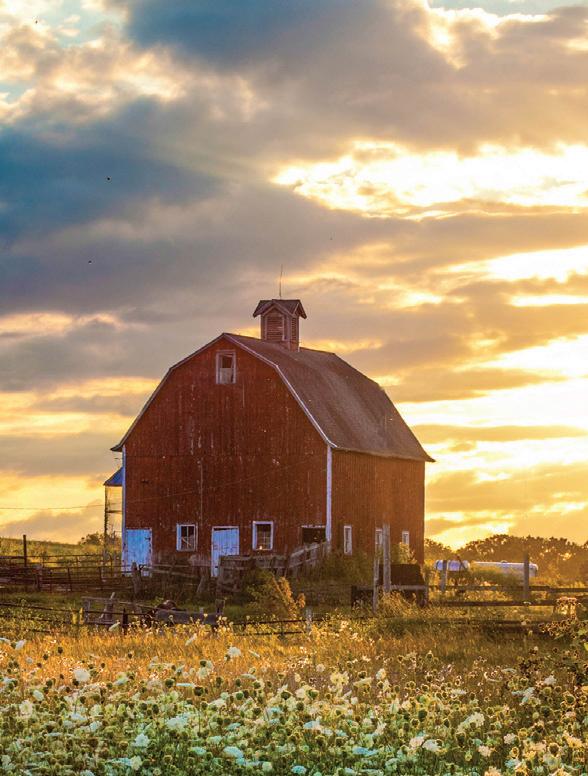









































































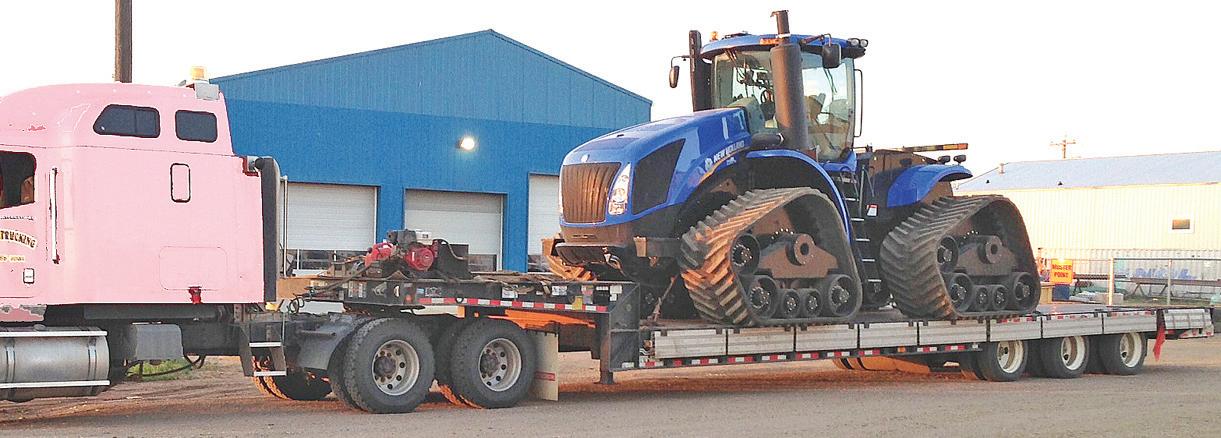



George Lee Local Journalism Initiative Reporter
A reignited trade war the one with China has made federal action essential to protect Alberta farmers and agrifood industries, UCP members and ministers said last week.
On March 20 China imposed 100 per cent tariffs on canola oil, canola meal and peas from Canada, along with 25 per cent tariffs on fish, other aquatic products and pork. The move followed Canadas tariffs launched last October of 100 per cent on Chinas electric cars and 25 per cent on its aluminum and steel.
But Chinese allegations and actions affecting Canadian canola go back at least to 2019. Thats when the worlds most populous country restricted Canadian canola for three years, claiming pests were found in the major Prairies product.
We are pressing Ottawa for urgent support, including compensation, market diversification efforts and a stronger focus on trade negotiations, Agriculture and Irrigation Minister R.J. Sigurdson told the legislature.
It’s very clear that due to the scope and scale of the impacts of this trade war (with China), the only institution that can compensate our farmers enough is the federal government. We need them to come to the table, and we need them to deal with this and support our farmers right now, said the minister.
A trade restriction blocked canola shipped by two major Canadian players between March 2019 and May 2022, with China alleging pests were detected in shipments.
Pundits speculated, however, that the restriction was a reaction to Canadas arrest of the chief financial officer of Chinese tech giant Huawei. Detained in Vancouver over U.S. charges of bank and wire fraud that were eventually dismissed, Meng Wanzhou returned to
China in 2021 after she was released from house arrest.
Then came Canadian tariffs announced last year on electric cars, steel and aluminum from China, and the trade war was on again. Almost immediately, in September, China announced an antidumping investigation against Canada. This year years tariffs of canola, peas, pork and aquatic food followed.
Matt Jones, the minister of jobs, economy and trade, said: “The uncertainty these tariffs create for business disrupts supply chains and reduces market confidence, but were committed to working with federal and international partners to protect our economy, diversify trade and maintain global market access.”
“A $30-billion industry in Canada, canola supports thousands of goodpaying jobs,” Jones said.
Alberta Treasury Branch reporting says that in 2024 Alberta exported over $408 million
in canola oil and meal and over $138 million in dried peas to China.
Alberta government data pegs the value of all 2020 exports to China at $4.5 billion. That number had grown by nearly half to $6.7 billion by 2024.
Said Jones, “the member for Calgary-South East, We need to ensure that these new tariffs dont slow down our momentum.”
Canada followed the lead of the U.S. under Joe Biden last year in instituting an electric car tariff to protect the North American industry from the communist superpowers subsidies.
The earlier dispute had already cost the canola industry between $1.54 billion and $2.35 billion in lost sales and lower prices between March 2019 and August 2020, reported the Canola Council of Canada.
China is Canadas largest canola seed destination, with more than 4.5 million tonnes worth $3.8 billion exported in
Continued on Ag Page 22
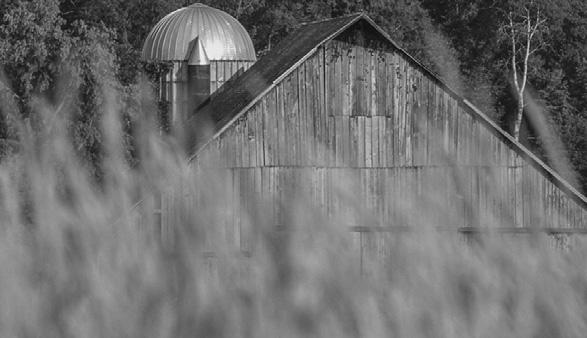





































Cal Braid
Local Journalism Initiative Reporter
Historically, the productivity coming out of an irrigated parcel of land is significantly higher than dry land. It also has the security of having a productive crop year over year because it’s not completely weather dependent on rainfall. However, there’s a catch: It ain’t cheap.
As general manager of Canada’s largest irrigation district, David Westwood knows the business of supplying water to thirsty farmland. Westwood’s St. Mary River Irrigation District has upwards of 500,000 acres under irrigation after amalgamating with the Taber Irrigation District in 2022.
While irrigation is a more surefire ticket to crop success than dry land, Westwood said it involves a lot more than buying pivots for one’s land. The overall cost includes the pump, power source, pipeline, controls, and in-
stallation fees, and that’s just the hardware for a functional system. A quarter section pivot could cost $160K to $175K factoring in the components and setup.
“It’s a significant capital investment, and it’s not just putting in the pivots,” Westwood said. “For example, if that land now becomes a potato crop, you’re going to be looking at having to then build storage to be able to handle the potatoes, because based on your contracts, they ship all year round. You’ve got to store them in the off-season when it’s not growing season, all those kinds of things. It’s almost always much more than just the investment in the actual irrigation infrastructure of the pivot; it’s all the ancillary things of what you need to do on your farm to be able to grow that product, store that product, and then ship that product.”
Fuel and truck costs are an added consideration, too. Farmers require trucks

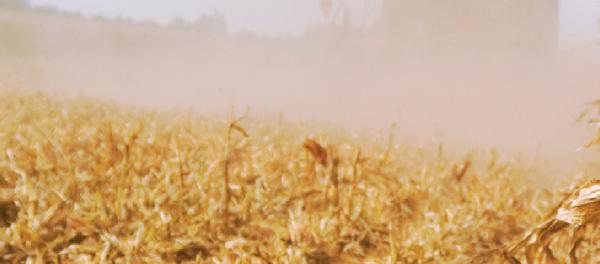
or in some cases, a fleet of trucks and drivers to haul loads of crops to elevators or processing facilities.
In 2022, SMRID increased its expansion limit acres. The District’s modeling indicated that between the pipeline modernization project savings plus the extra storage from the planned Chin Reservoir expansion, it would be able to service up to 80,000 more acres.
“We had a lottery for the first 15,000 acres and we’re doing these in very di-
gestible (increments) over many, many years. Those now have been fully subscribed for and by this irrigation season coming up, those new 15,000 acres are now potentially coming into production.”
Some farmers will be irrigating on previously held dry land, and some are expanding upon preexisting irrigation.
“Some are just putting irrigation acres on a parcel of land that did not have irrigation acres on it before, but a part of that par-
cel did so,” Westwood explained. “A classic example would be they had enough irrigation acres under the circle pivot, but in the past had never chosen to have irrigation acres in the four dry corners of a circle pivot. But now they’ve chosen to put irrigation acres on all those corners, and it gives them
the flexibility they may want to do a corner arm system, or they just may want the water that comes along with those acres.”
Building a progressive and productive farming business is no cinch, but modern advancements have turned agriculture into a huge business–if you can afford the buy-in.

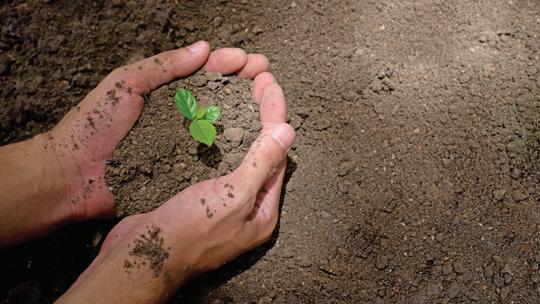
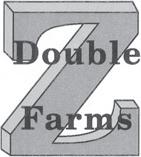






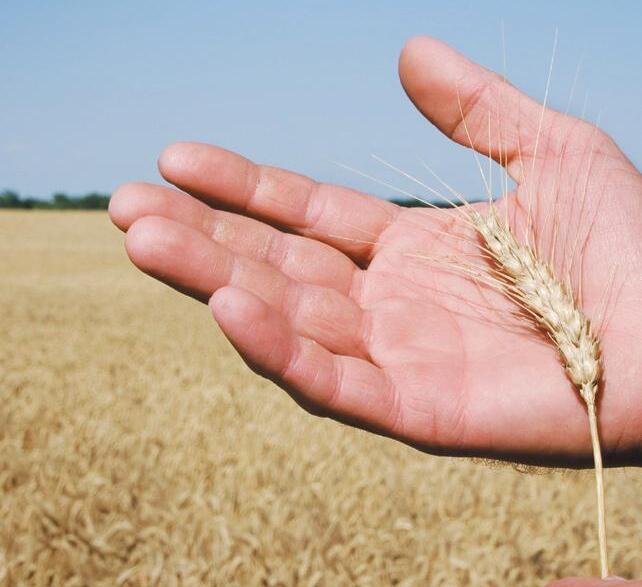

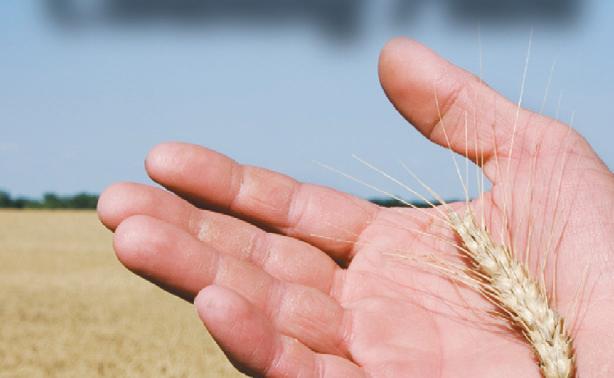








When you compare the PowerRich fertilizer program with traditional fertilizer you’ll notice 3 big differences and they are:
PowerRich, along with your present nitrogen program, provides a total fertilizer. In addition to phosphorus and potassium PowerRich also provides all of the other nutrients that are either absent from your soil or in a form unavailable to your crops.
PowerRich fertilizer uses nutrients that are all compatible with one another. PowerRich uses primary, secondary and micronutrients which are compatible and are readily available to your crop.
The third main difference with the PowerRich fertilizer program and traditional fertilizer, is that rather than applying the fertilizer all in one shot, the PowerRich program is a 3 part program that is tailored to the different requirements of your crop as it grows.




Poitras Staff Reporter
In a recent release from National Farmers Union (NFU), the organization explains that prairie farmers are expressing their concerns about the dangers of carbon capture and storage (CCS).
“CCS projects pose a number of risks to human, animal, and environmental health.
Pipeline ruptures pose asphyxiation risks from CO2, as well as contamination risks from toxic chemicals such as hydrogen sulfide, which is carried alongside CO2. Concerns also have been raised about CCS storage facilities leaking and leading to dissolution of CO2 into groundwater. The dissolution of CO2 in water creates carbonic acid, which is unsafe for both humans and livestock” NFU says.
The goal of CCS is to cut carbon emissions to
limit the rise of global temperatures. As defined on the Shell Canada website, “carbon capture and storage is a combination of technologies that capture and release carbon dioxide (CO2) deep underground, preventing its release into the atmosphere.”
“At Shell, we believe that CCS will be essential for helping society to achieve net-zero emissions,” Shell Canada’s website says.
In a meeting on the carbon capture project held in October of last year in Viking, concerns were raised about the usage of good farmland during the process of CCS.
“We are not looking for areas where there is good farmland (to use). The work is mainly underground,” geophysicist Alexa Tomlinson explained.
However, NFU board member Glenn Norman, of Red Deer County, says CCS is not the answer.
“Geological carbon cap-




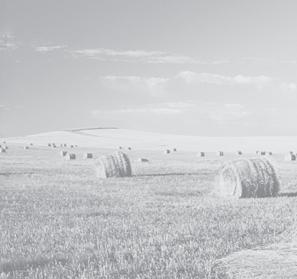

ture and so-called ‘storage’ is no solution at all to climate change. Nearly all attempts to date have failed and leaked to the surface, contaminating both ground and surface water,” Norman said.
“The NFU, in collaboration with other groups, is focusing its attention on the Cold Lake CCS Project,” NFU says.
“Carbon Capture aids and abets the priorities of the oil and gas sector, which prioritizes unsustainable extraction and exploitation. In solidarity with farmers and the Indigenous peoples affected by the Cold Lake CCS Project we must understand that is not in their interests. When we make connections to what Albertans have endured: the droughts, the wildfires, the smoke and poor yields, to the risks of CCS, it is clear that the Cold Lake Project does not benefit us,” NFU youth president Adama
Bundu, of Edmonton, said.
There is currently a running facility, Quest CCS, operated by Shell Canada on behalf of the Athabasca Oil Sands Project located at the Scotford Upgrader northeast of Edmonton.
“Shell opened the refinery and styrene plant at Scotford in 1984. A monoethylene glycol plant was added in 2000. The Shelloperated Scotford Upgrader opened in 2003 and it was expanded in 2011. The Shell-operated Quest CCS facility was added to capture CO2 from the three hydrogen manufacturing units within the upgrader in 2015,” Shell’s website says.
In June 2024 Shell announced the Final Investment Decision for Polaris, the carbon capture project at Scotford, as well as the Atlas Carbon Storage Hub in partnership with ATCO EnPower.
“The Atlas Carbon Storage Hub from Shell

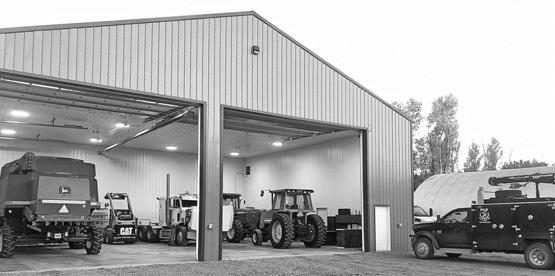



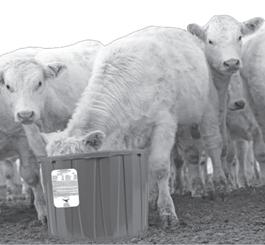
and ATCO EnPower intends to store CO2 emissions generated in the Alberta Industrial Heartland region. The first phase of Atlas will store CO2 emissions captured by Shell’s Polaris carbon capture project. CO2 emissions captured by Polaris will be sent to the Atlas Carbon Storage Hub via an approximately 22-kilometre pipelineto two storage wells located in Strathcona County. CO2 will be stored approximately two kilometres underground in the Basal Cambrian Sands, the same formation used to successfully store CO2 from the Quest CCS facil-
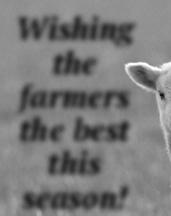

ity currently operating at Shell Scotford,” Shell Canada Community Relations Advisor Janine King said in a previous interview with the Tofield Mercury.
“Polaris and Atlas will build on the success of the Quest carbon capture and storage facility at Scotford, which has safely captured and stored more than nine million tonnes of CO2 from the Scotford upgrader since 2015 that would otherwise have been released into the atmosphere. Both projects are expected to begin operations toward the end of 2028,” she said.







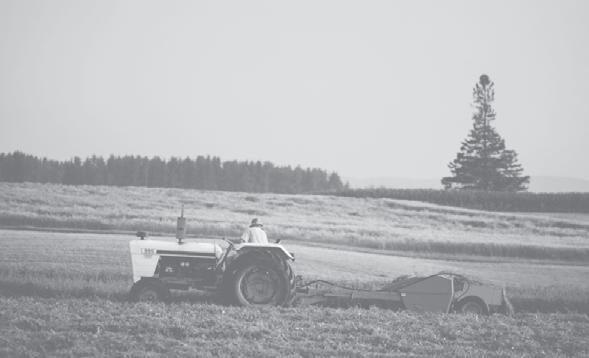



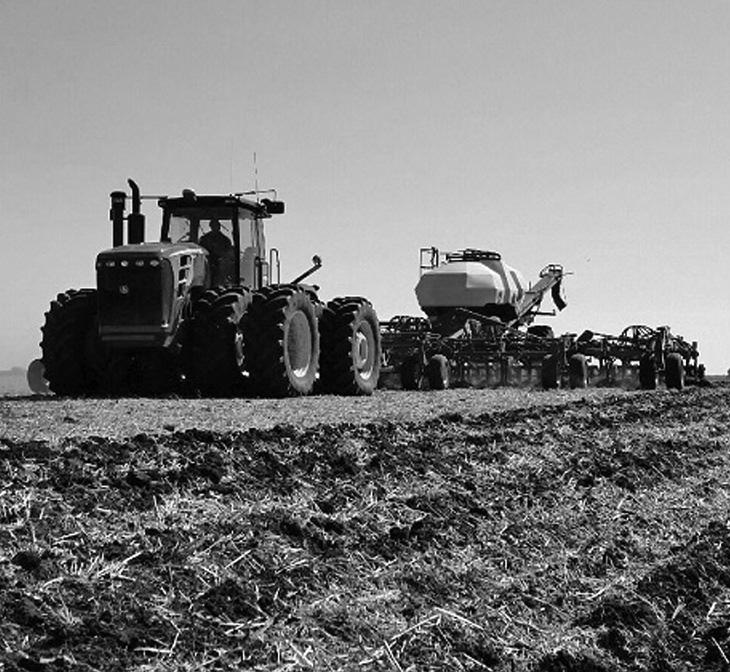
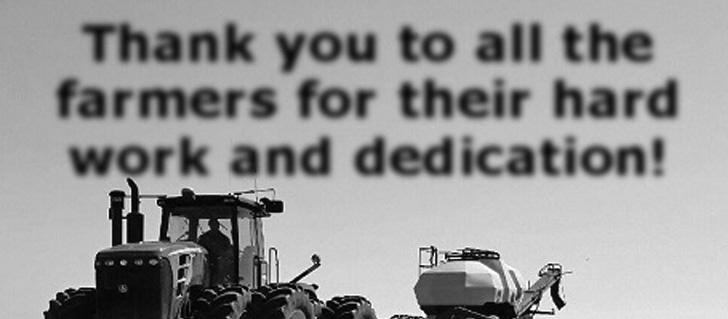
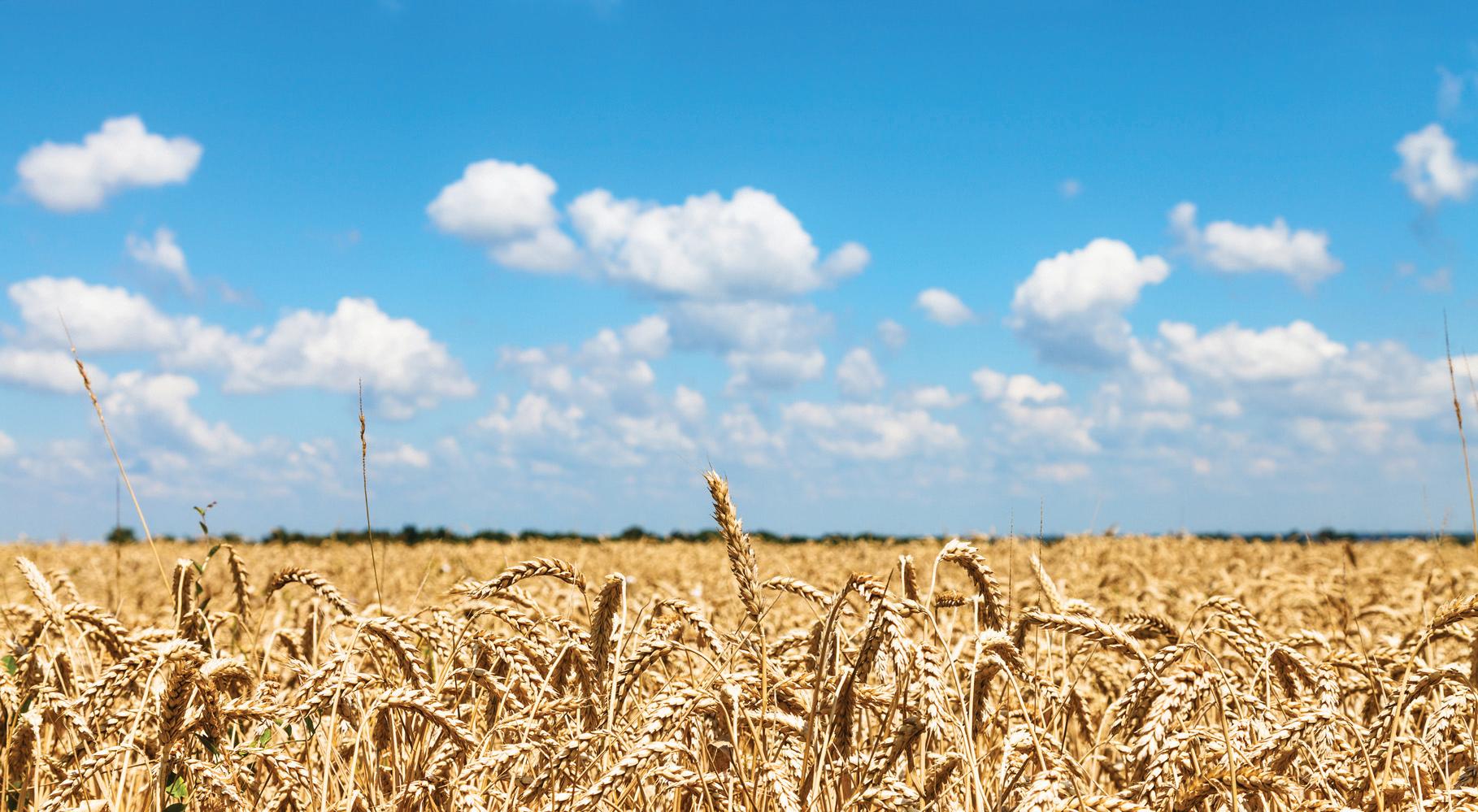
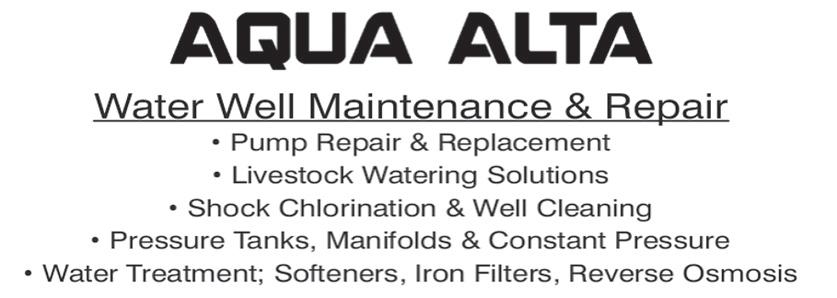























By Sylvain Charlebois (Troy Media)
Canada has started a trade war with China, yet few in Ottawa seem willing to acknowledge the consequences.
Unlike the United States, which often imposes tariffs as a bargaining chip only to later negotiate, China takes a far more calculated and punitive approach. When Beijing retaliates, it targets industries with both economic and symbolic significance, ensuring maximum pressure on its adversary.
In Canada’s case, that means agricultural exports—particularly canola, known globally as “Canada oil,” and Atlantic lobster, both of which have now become collateral damage in this escalating dispute.
The fallout is already being felt. Starting March 20, Canadian grain farmers, hog producers and seafood harvesters face 100 per cent tariffs when exporting to China, a critical market for these sectors.
Canola, which generated $3.72 billion in exports in recent years, is now under anti-dumping investigations, while rapeseed oil—a major processed product—is being hit with prohibitive tariffs. Pork exports, once thriving, have dwindled as China tightens import restrictions, and the billion-dol-



lar seafood industry, led by lobster and crab, is now facing similar uncertainty.
This crisis was set in motion by Ottawa’s decision last October to impose tariffs on Chinese electric vehicles and batteries, mirroring a move by the United States. Then-Prime Minister Justin Trudeau sought to align with U.S. President Joe Biden, aiming to shield North American manufacturing from an influx of cheap Chinese imports.
But now, with both leaders gone, Prime Minister Mark Carney has made it clear he has no intention of reversing course.
China’s retaliation follows a familiar pattern. When Huawei executive Meng Wanzhou was arrested in Vancouver in 2018 at the request of the U.S., Beijing didn’t retaliate against Washington—it went after Canadian farmers, restricting key agricultural exports.
The same playbook is being used now, yet Ottawa appears either oblivious or unwilling to acknowledge how much damage this is causing to its own producers.
At the core of this conflict is Canada’s high-stakes bet on electric vehicles and battery manufacturing. The federal government has commit-









ted nearly $50 billion to develop the sector, funding projects like Stellantis and LG’s battery plant in Windsor, Volkswagen’s gigafactory in St. Thomas, Ont., and Northvolt’s facility in Quebec—despite Northvolt’s financial struggles and reports that its parent company is on the verge of bankruptcy.
Additional billions have gone to Ford and other automakers as part of
Canada’s strategy to become a global battery hub. While these subsidies are intended to create jobs and secure supply chains, they come with immense financial and economic risks. There is no guarantee that Canada’s EV industry will be globally competitive or that these government-backed projects will deliver on their promised returns.
Continued on Page


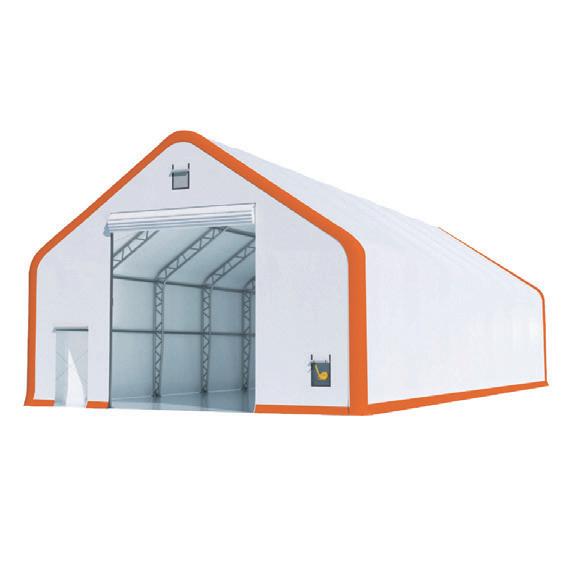









































































































































































































































































































































































































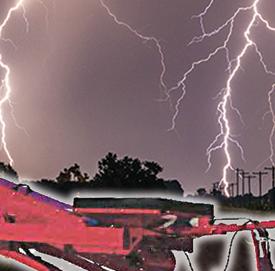

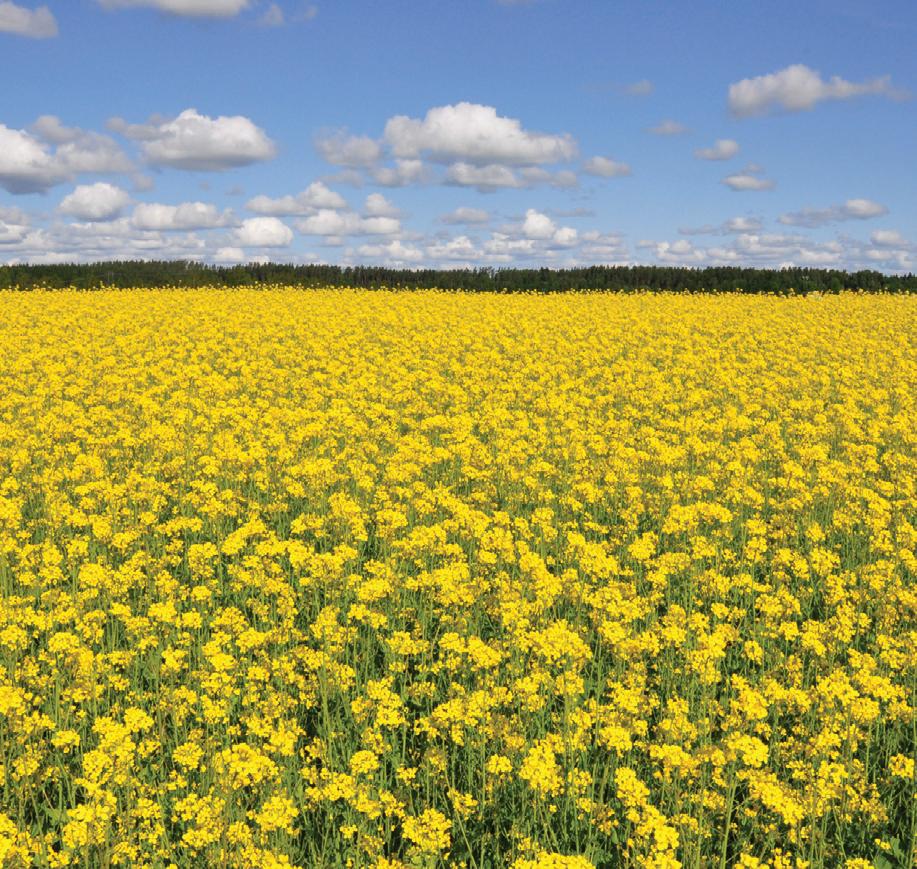




































Kari Janzen Staff Reporter
AgKnow, providing an Alberta approach to farm mental health, seeks to provide better access and use of the mental health services currently available, and works to ensure those services align with the needs of farmers.
“The work that resulted in AgKnow began in 2021 when the Ministry of Agriculture and Irrigation responded to a resolution from the Agricultural Service Boards asking for farm specific mental health resources and services,” AgKnow program director Linda Hunt said.
“The initial ask was for Agriculture Research and Extension Council of Alberta (ARECA) to adapt some mental health resources for agriculture industry. To do that we needed to know which resources and who needed them, which resulted in the project becoming a needs assessment, and then a quest to answer the question, What does a made for Alberta Farm Mental Health program need to be?” Hunt said.
AgKnow is working to increase the capacity of mental health providers in the agriculture industry to address to growing concerns about farmer mental health.
“Research in Canada is showing that farmers have higher rates of suicidal ideation, anxiety, and depression than the general public, and in the US they found farmers are twice as likely to die by suicide than the general public. But what should or can be done about it? There are programs asking this question across Canada, and some exciting new supports that are becoming available.
“But what would work for farmers here? We discovered that there are places in the province that mental health services are underutilized and the providers are unsure what is preventing farmers from accessing them. In other places the services either don’t exist or are overburdened with demand. So, since 2021 AgKnow has been connecting with farmers, farm associations, and professionals that work in agriculture, health care programs, and researchers to work out how to increase the capacity of our health and mental health providers and our agriculture industry to support farmers, their families, and veterinarians,” Hunt said.
AgKnow is undergoing many projects and initiatives, including funding research, pilot programs, working with industry groups, attending events to speak with farmers, providing online webinars, and conducting surveys.
“We seed funded research in Alberta so we can get a good handle on what is happening now, and continue to con-
nect and encourage new projects that make discoveries or validate methods of outreach. We pilot programs like our farm informed counselling network, and workshops on resiliency, suicide prevention, and mental health literacy.
“We work with industry groups to incorporate mental health content into publications where farmers are already engaged, like the calving resources at the Beef Cattle Research Council (www.beefresearch.ca/blog/how-to-prepareyourself-and-your-beef-operation-for-calving-season/).
“We also attend events with farmers and talk about the struggles on farm for their feedback and insights. We provide online webinars designed to encourage deeper understanding of topics that farmers have identified as important. We conduct surveys and take the results to program and service providers in hopes we can encourage the development of services that meet the needs of farm families. It is important to us that we are meeting the needs of farmers and a benefit to their farming operation,” Hunt said.
In order to operate, AgKnow applies for grant funding, but that does not cover all costs associated with running the organization.
“Funding has been a big challenge for us. Even though the province has been very supportive, project grants do not cover all of our costs, so we need to leverage the grant investment with nongrant funds. Last year our one-year grant finished and the four-year grant application was delayed so we ended up working with our stakeholders to keep things moving. The support from industry has rolled in in small bits and has been keeping us afloat but not providing the stability required to keep employees.
“These are the growing pains that many worthwhile initiatives go through and the outpouring of support from rural municipalities, farmers, and farm associations gives me optimism that things can get better,” Hunt said.
If individuals or businesses are interested, AgKnow has a donation link on their website and Hunt said they are always open for sponsorship conversations.
“We are working on an agreement that will give us charitable status so we can issue charitable receipts, and in the meantime a number of partners have provided funding to keep things moving. I am very grateful to ATB, Results Driven Ag Research, PorchLight society, rural municipalities, and individual donors that have contributed financially and with in-kind support.
Continued to page Continued on Ag Page 18


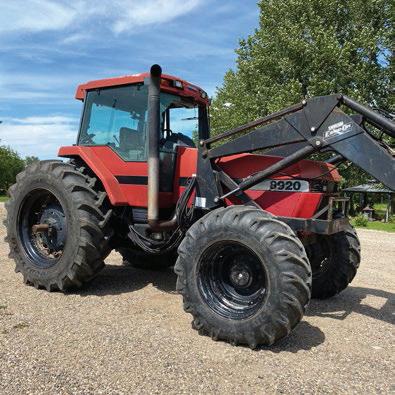


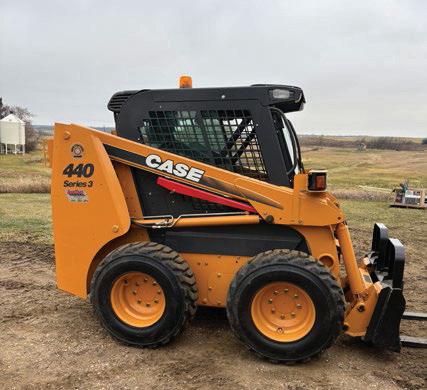
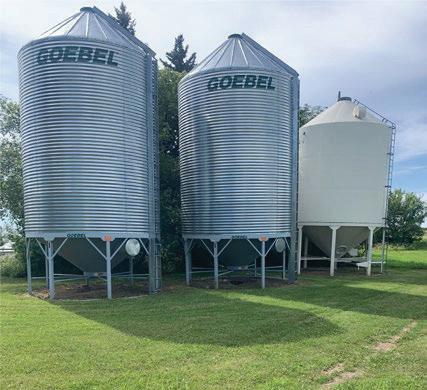

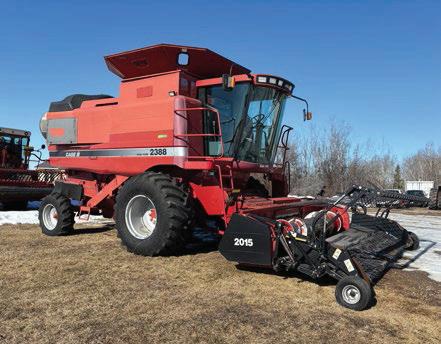

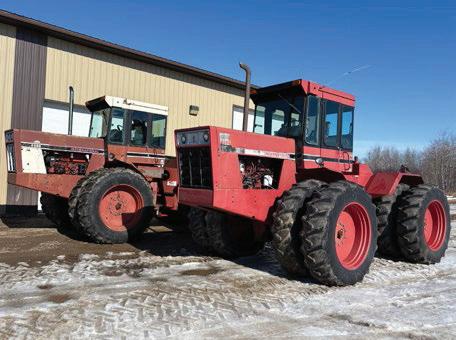

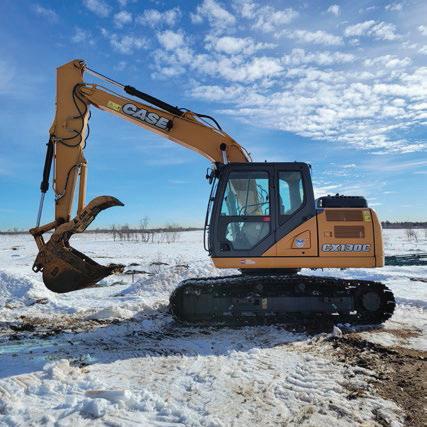
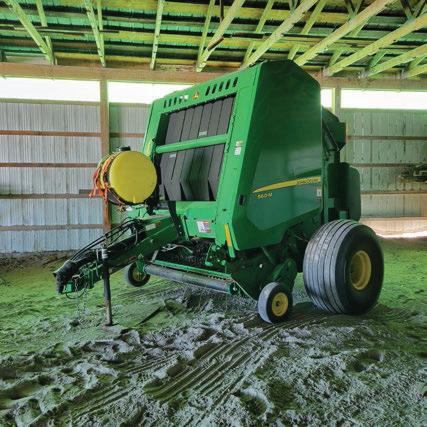

Ottawa has essentially chosen to apply a supply management-style approach to an emerging sector—limiting competition, inflating costs and betting taxpayer money on an industry that is far from proven. As history has shown, when markets are heavily managed, consumers end up with higher prices, lower quality and fewer choices.
In prioritizing Ontario and Quebec’s manufacturing jobs, Ottawa has knowingly sacrificed the interests of Canadian farmers and seafood harvesters. Yet, rather than acknowledging this trade-off or offering support, the federal government has remained largely silent.
The absence of a response from new Agriculture Minister Kody Blois is particularly troubling. With farmers already struggling due to rising costs and declining margins, the imposition of 100 per cent tariffs on critical exports
is a major blow.
If Minister Blois does not act swiftly to defend Canada’s agricultural sector, farmers and seafood harvesters will be left to bear the full weight of Ottawa’s geopolitical gamble.
Canada’s handling of this trade war has been reckless. Instead of mitigating risks, the government has gone all in on an industry that remains untested while turning its back on agricultural sectors that have long been pillars of the Canadian economy.
If Minister Blois and the government fail to intervene, the economic consequences for Canadian farmers and seafood producers will be severe. Ottawa may have been willing to make this gamble, but it’s the agricultural sector that will ultimately pay the price.
What a mess.
Dr. Sylvain Charlebois is a Canadian professor and researcher in food distribution and policy. He is senior director of the Agri-Food Analytics Lab at Dalhousie University and co-host of The Food Professor Podcast. He is frequently cited in the media for his insights on food prices, agricultural trends, and the global food supply chain.













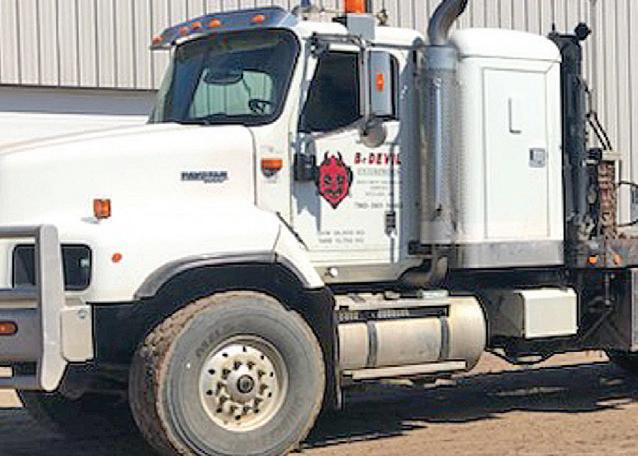

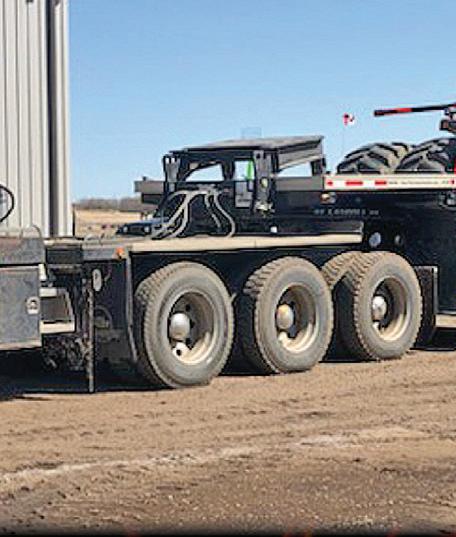












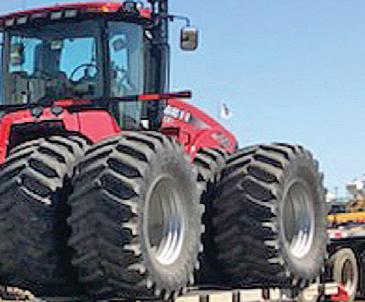




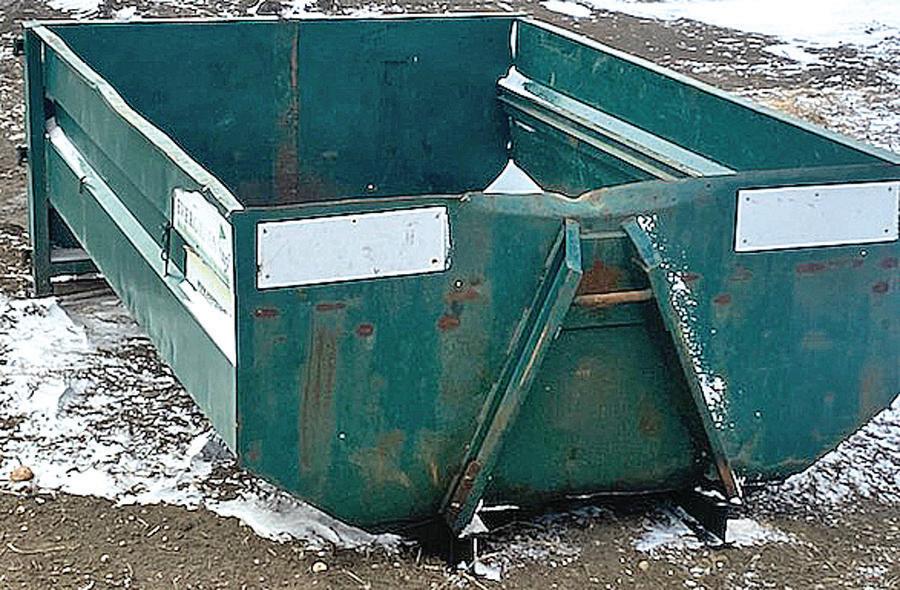














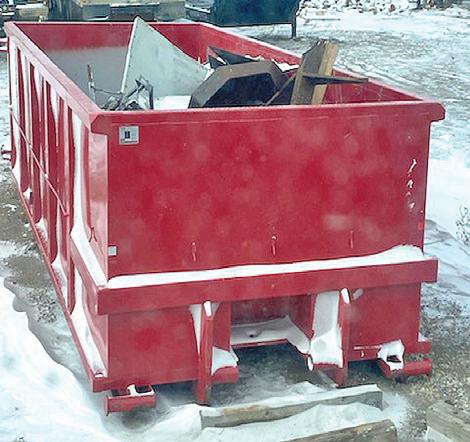













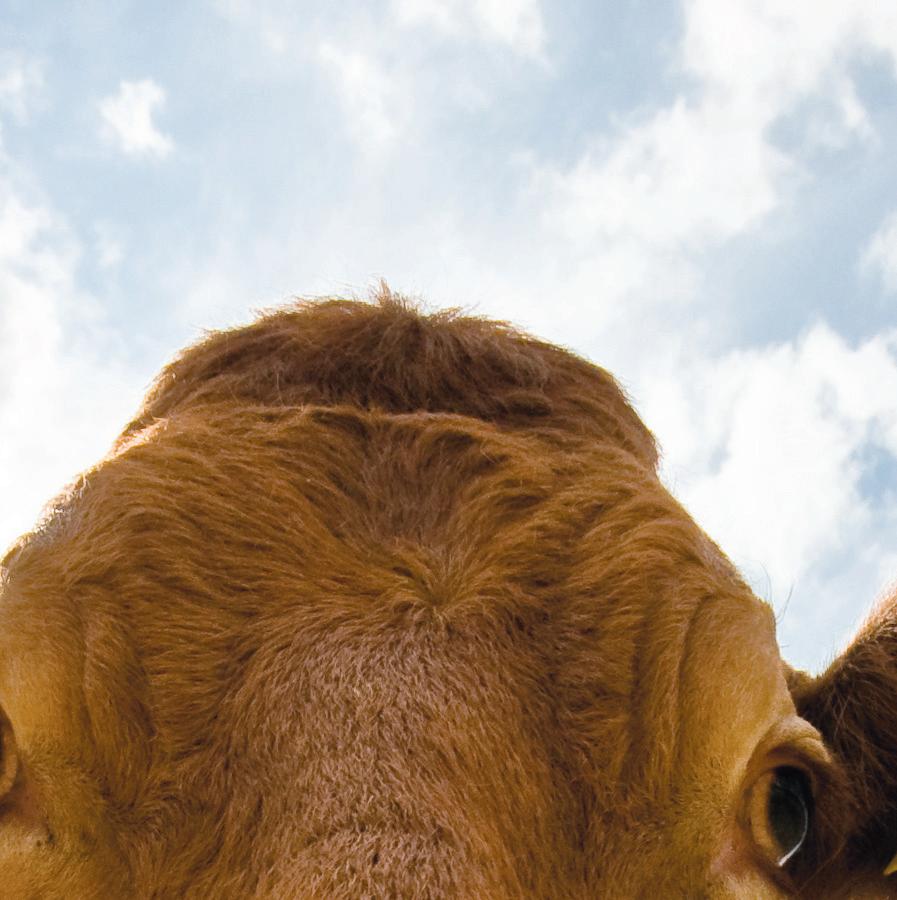
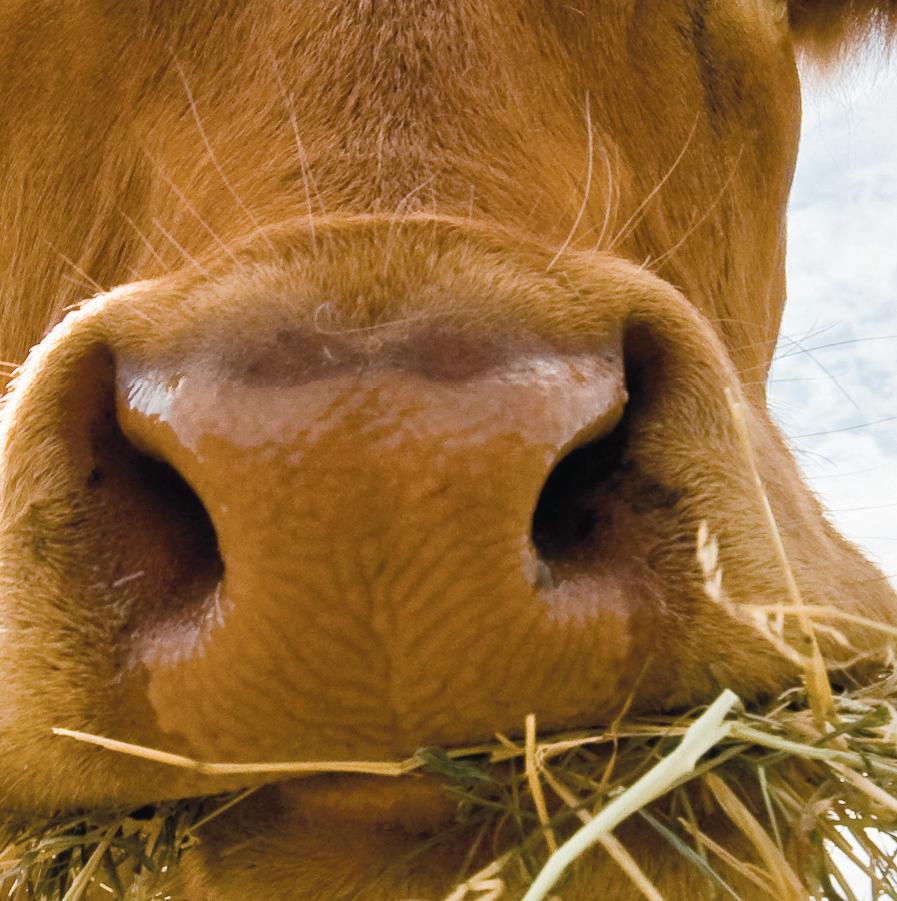
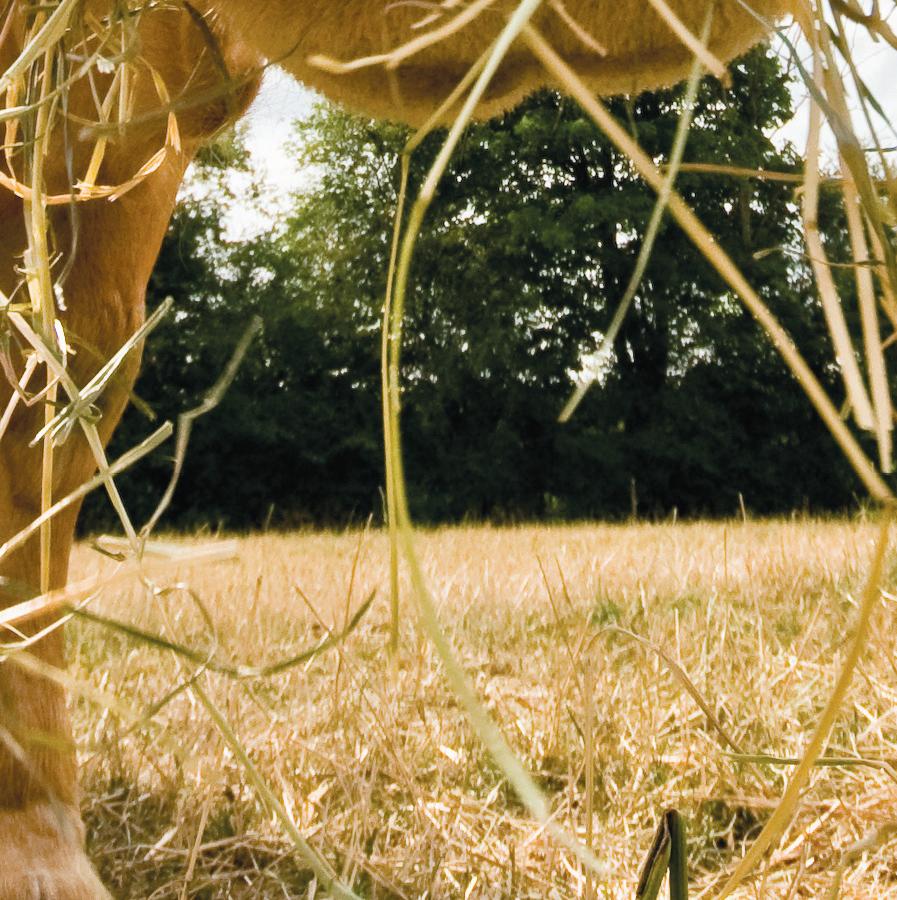




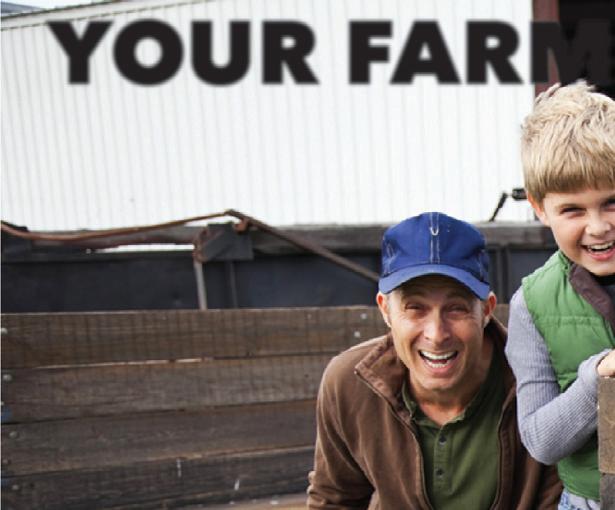

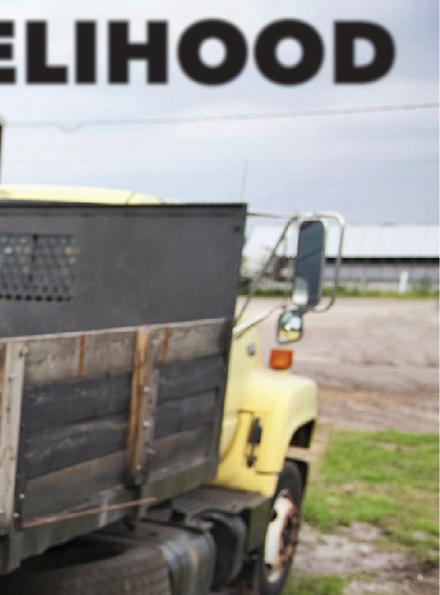

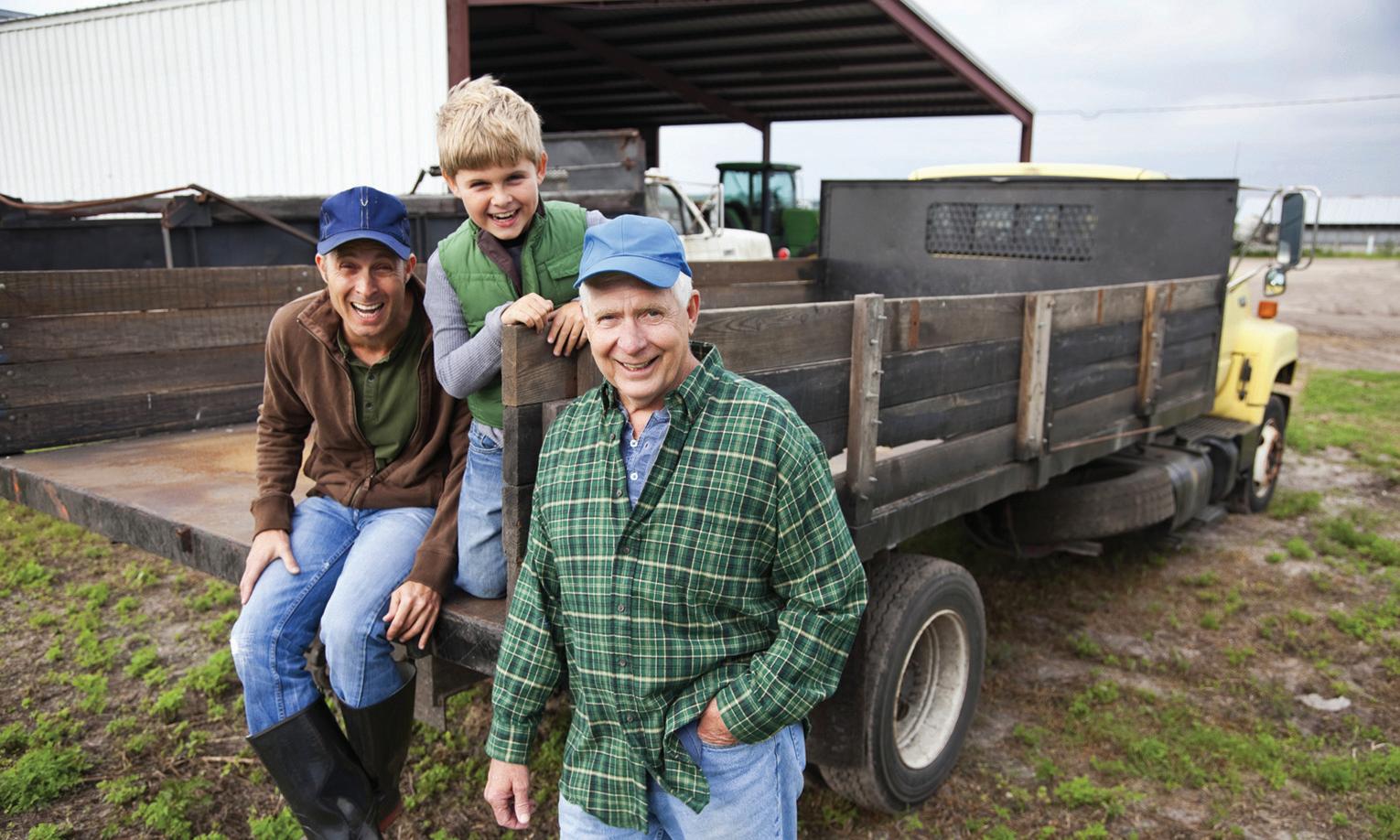












ials Bundle includes coverage for farm structures and contents, A Farm Essent des amounts for corrals and fuel and fuel tanks, profes but also incluerinarian private and and water and sional fees,
ose the that meets the needs of your farm and what’s You to cho
You get to choose the coverage that meets the needs of your farm and what’s important to you.




Choose the coverage that you need, from Livestock, crop inputs and outputs, farm business income and agricultural equipment coverage. We offer specialized coverages tailored to your unique farming business. tomizable We offer cus ms
verage that you need, from Livestock, crop inputs and outputs, Choose the co business income and coverage. farm ecialized We offer covera spe

This has been the hardest and yet most rewarding project I have every worked on,” she said.
When asked what questions people usually have in relation to AgKnow, Hunt said most ask how they can help.
“It’s not a hard sell, as the last few years have been very difficult for the health care system in Alberta, and for rural residents it has felt like a centralization of services in the urban areas. So much change in how or if services are available,
and at the same time some new services being rolled out that blanket the province, like Counselling Alberta which offers no wait time, long and short-term counselling services, virtually everywhere in the province, and, in some places, in person, on a sliding scale thanks to funding from the new Ministry of Mental Health and Addictions.
We are excited to be partnering with them and increasing the number of farm informed counsellors in their network so

that every farm family has affordable access,” she said.
Hunt said that AgKnow has been funded as a discovery project, but with the huge need, they are working with the ARECA board to work out how to move from a short-term discovery project to a long-term initiative.
“We have an updated report with recommendations that is being published on our website right now as well as some videos from our stakeholder engagement ses-
sions that anyone interested can watch and provide feedback through an online form. It’s really helpful to us to hear from farmers from all types of farms, and all areas of Alberta so we can really speak with their voice when advocating for services and ensure the services will actually meet real needs in the industry,” she said.
Hunt said the best way for people to stay in touch and find out what the organization is up to, is through the website, AgKnow.ca and by sub-

scribing to their newsletter.
“Getting farmers to participate in our surveys and engagements helps us stay on track to make a real difference for the community. Right now, we have a survey about farm transition that is helping us dive deeper into the “farm family dynamics” that are a main driver of farm families to reach out for counselling support,” she said.
















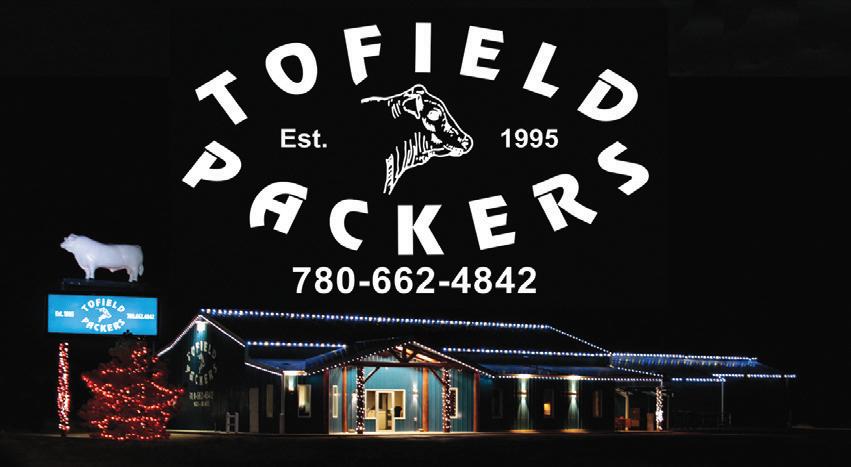





Leslie Cholowsky
The Battle River Railway New Generation Co-op (BRR NGC) was started in 2010 with local investors, many of whom were farmers, to purchase a shortline railway that serviced the communities of Kelsey, Rosalind, Forestburg, Heisler, Galahad, and Alliance.
The Co-op has different types of shares
In all, it’s 52 miles of straight railway, the longest straight section of railway in Alberta, they say.
BRR General Manager Matt Enright says the original model for the railway was under the single-desk model, and was a sure-fire way to get producer cars to clients/shareholders in an age of big crops and small rail capacity.
A lot has changed since then.
BRR has experienced a lot of growth, and now has multiple revenue streams. That includes rail freight, shipping grain, fertilizer, and fly ash. Enright says a new contract will soon also bring bentonite clay hauling. BRR is also now doing grain merchandising.
Revenue also comes from rail car storage and switching, transloading, and even tourism, although the latter is a break-even at best.
In 2020, BRR purchased existing grain elevators in Rosalind, Heisler, and Alliance, and added transloading to its revenue streams.
In about 2021, BRR added some track at Forestburg to substantially reduce the amount of switching required, also reducing the impact of operating across public crossings.
In 2024 BRR got rid of three 70-yearold timber bridges on the line, replacing them with concrete ‘box culverts.’ Not only was this time efficient, with less than a week per bridge, it was also cost efficient, with an expected lifespan of 100 years. The new culverts are also able to handle flood runoff more efficiently and safely.
Enright says this project was funded by the federal Rail Safety Improvement Program with a grant for $2.9 million.
In 2022, BRR applied for grant funding under the National Trade Corridors Fund, part of that was meant to cover the bridge upgrades, and part to extend a spur line into the Forestburg Industrial Park that is currently under development.
After two years, news of that grant’s approval came, after the Rail Safety Improvement Grant had been received; luckily the two were stackable.


This grant was for $5.7 million but a lot had changed since the application went in. With this additional funding, instead of bridge improvements, BRR was able to do bridge replacement, with most of that cost covered by the two grants.
A revised project list for the NTCF grant has been approved, which includes building the track out in Alliance this year, as well as adding five times the existing storage capabilities, with five 900-tonne bins and also adding a
third track. This will provide the ability to load 100 cars.
“That represents a lot of growth and room to grow a grain business. We feel like there is a lot of potential in Alliance, they are close to a lot of acres.”
Enright says in Forestburg the plan for construction season 2027 is hopefully to put a rail spur in as well. “We would like to see a tenant in place by then.”
Enright says all projects under the Continued on Ag Page 32

The Battle River Railway New Gen Co-op owns the shortline raiway that runs from just east of Highway 53 to Alliance, and is based out of Forestburg, shown here. At the bottom of the photo is the two-track locomotive house. The upper right corner shows a corner of the new industrial park in Forestburg where a rail spur could be built to accomodate an industrial tenant needing rail access.



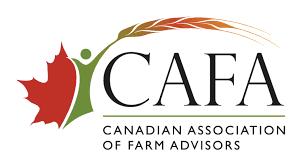


Brett McKay Local Journalism Initiative Reporter
Rural Municipalities of Alberta (RMA) says its members are facing an unpaid oil and gas property tax burden of $253.9 million. As new arrears are added each year, the chance of recovering these unpaid millions is shrinking, and municipalities are calling on the province fix well-known loopholes that let debtor companies off the hook.
In 2024, the unpaid oil and gas property taxes owed to rural municipalities grew by $67.8 million, more than 50 per cent higher than the outstanding taxes owed in 2023, according to a survey of RMA members.
The portion of this debt owed by insolvent companies is now over 60 per cent, leaving municipalities with little
choice but to accept their losses and write off the debt.
“When these companies are put up for sale or transferred, there is no opportunity for municipalities to attach that unpaid property tax portion to the resale or to try and get any of the value back,” said RMA President Kara Westerlund.
“There is no mechanism, whether legislation or within the (Alberta Energy Regulator), that allows us to be a creditor.”
The fact that municipalities are powerless to compel tax payment is well known within the oil and gas industry, Westerlund said.
The recent spike in the number of insolvent companies suggests several non-viable companies continued operating, and not paying taxes, in 2023 before going under last year,
according to RMA.
The growing issue of insolvency highlights the need for the AER to “adopt a more effective approach to ensure that the oil and gas industry meets its tax obligations to municipalities while still operating,” the RMA said in a its 2024 report on unpaid oil and gas taxes.
Rural municipalities are owed over $100 million by operational companies. Though hundreds of oil and gas companies currently have unpaid property taxes, a handful of bad actors are responsible for a huge portion of the debt. The ten worst offenders owe a combined $67 million, and a single company owes over $27 million to 19 municipalities.
“The attempts in the last several years to put
a stop to this type of behaviour in the industry are not working. RMA is willing to work through the solutions.
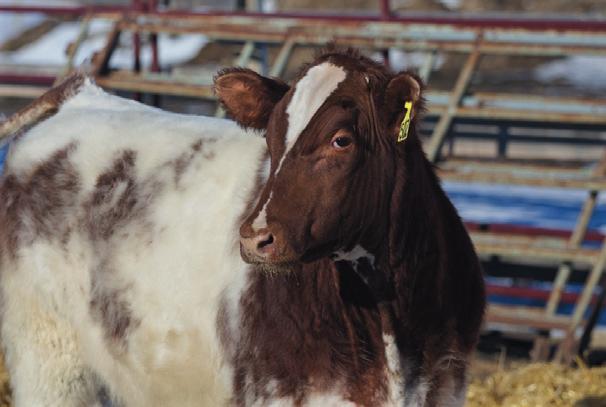



Westerlund said RMA is hoping to meet with officials from Municipal Affairs and Energy and Minerals to create a
“We're willing to come to the table. But enough is enough,” Westerlund said.
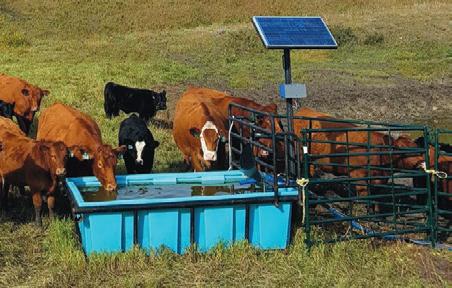
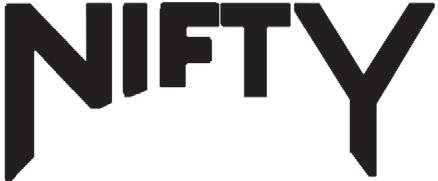




bility strategy and implement solutions to strengthen enforcement and eliminate the unpaid property tax problem.


































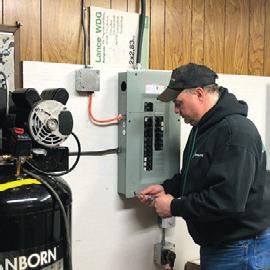





Friends of the Battle River Railway presents Fulfill Your Bucket List -

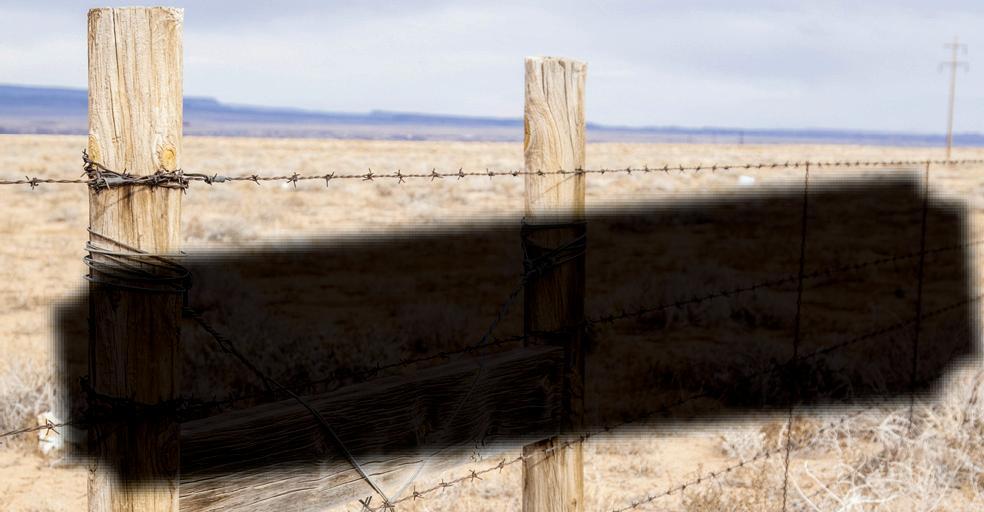
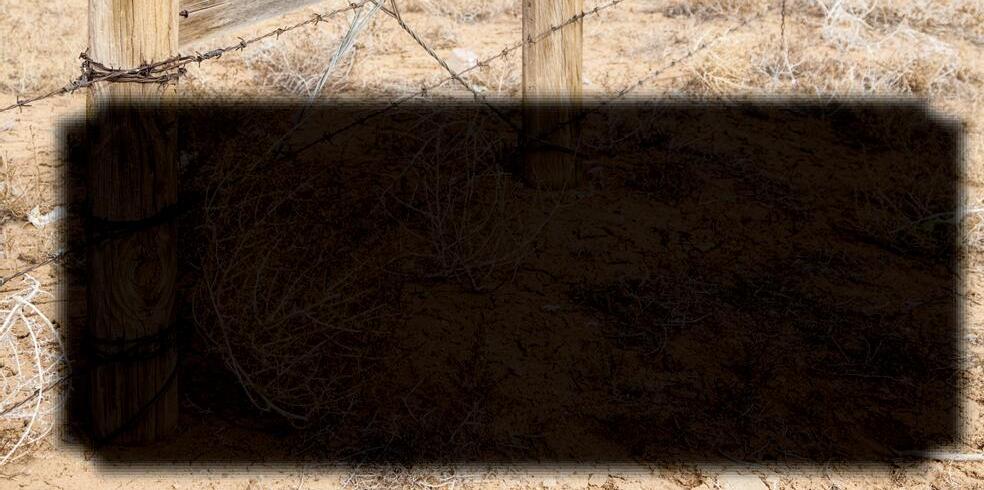
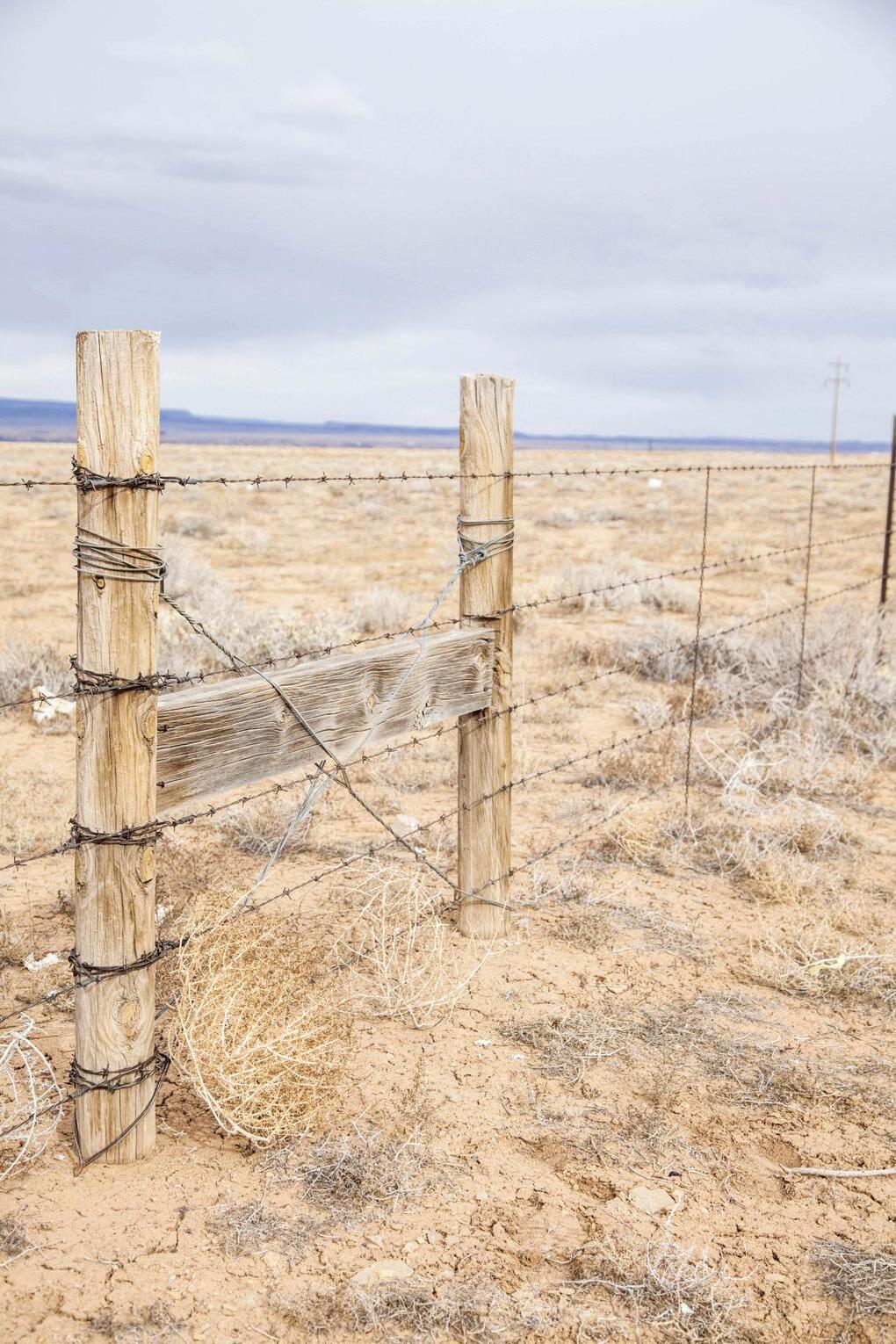
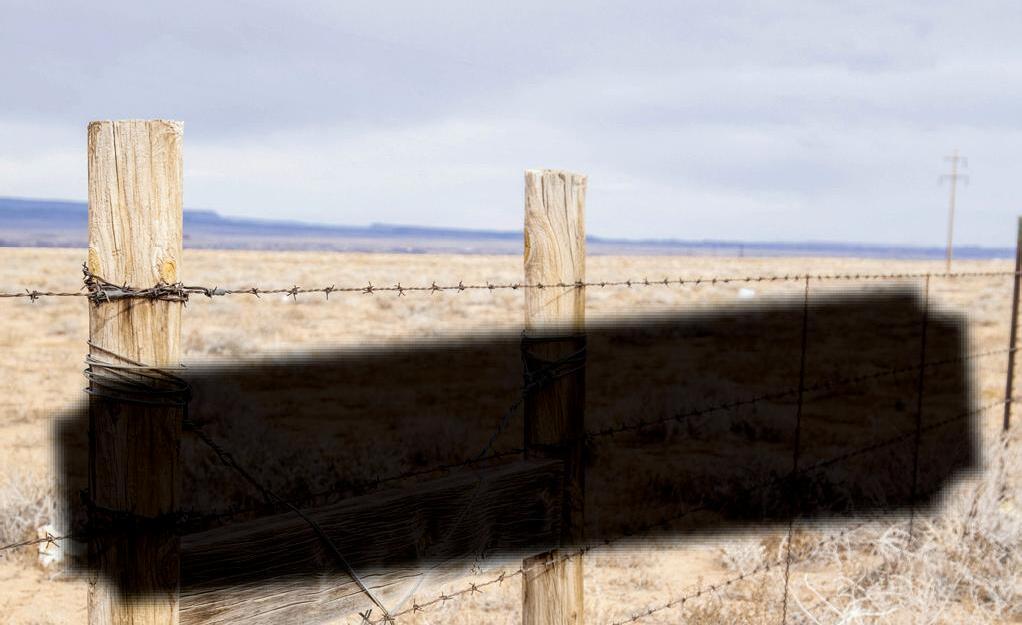





Accepting delivery of consignments from Friday, Apr 11 to Friday, Apr 18 from 8:00 am to 6:00 pm. ALREADY LISTED: 3 LARGE LATE MODEL FARM DISPERSALS! CONSIGN TODAY TO BE PART OF THIS BIG AUCTION! Public Viewing: Monday, Apr 21st to Thursday Apr 24th from 8:00 am- 6:00 pm & Friday, Apr 25th from 8:00 am until NOON SHARP. At our yard: 2 MILES NORTH OF CAMROSE

It’s the Experience — make memories and fulfill your Bucket List in 2025 with Battle River Train Excursions. With headquarters in Forestburg, the Friends of the Battle River Railway (FBRR) are delighted to offer private charters alongside a great lineup of theme-based day train excursions this year.
May 17 - Sip N’ Ride Brewery Tour
June 14 - Historic Heisler Hotel Excursion
July 19 - A Prairie Town Train Excursion
August 16 - Explore Farm to Fork by Train
November 29 & 30 - Murder on the Battle River Express
December 13 - Santa Daze Train to Alliance
For more information about private charters, renting the station, or any of our train excursions, visit:
www.battlerivertrain.com
Email friendsbattleriverrail@gmail.com 780-781-9260 www.facebook.com/battleriverrail
Continued from Page 7
2023, the federal government published in a September statement.
The UCPs Glenn van Dijken, the member for Athabasca-BarrheadWestlock, said last week: “Alongside the energy sector, Alberta’s economy rests on the health and prosperity of our agricultural sector. It supports thousands of jobs and contributes billions to our provinces economy.
“Canadian farmers and food producers now face serious economic uncertainty thanks to China and their retaliative tariffs on Canadian agricultural products.”
Grant Hunter, the UCP member for TaberWarner, said: “This escalation in trade tensions has already significantly impacted bilateral trade and will continue to do so while these tariffs remain in place.”
Sigurdson, the Agriculture Minister, called the situation ”very complex” and said its full impact remains unknown.
“Our province, of course, has a long history of standing up for its economic interests, and thats exactly what were doing,” added Sig-
urdson, the member for Highwood.
The legislatures discussion of trade with China takes place as the Trump effect continues shaking the foundation of geopolitics and geoeconomics.
Since his inauguration in January, President
Donald Trump has posted and postured about using tariffs in a way he claims will amp up homeland industries and create a golden age in the U.S.
The levels and broad brush of his U.S. tariffs are unprecedented in post-Second World War
trade, and most economists say they wont achieve what Trump says they will.
Although Trumps tariffs against Canada have been on-again, offagain, some level of implementation supposedly happens this week.
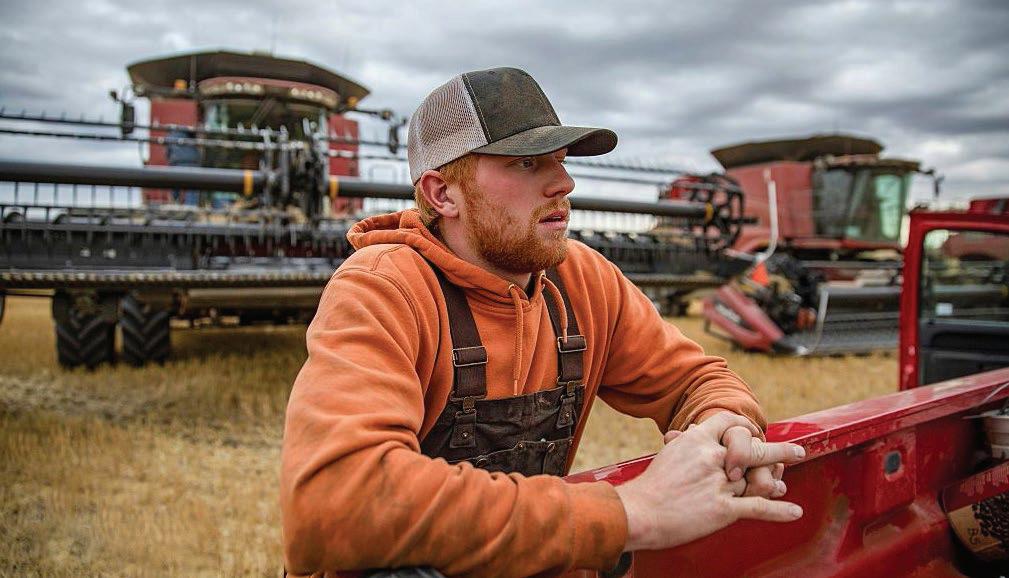
Prime Minister Mark Carney has said Canada will have to adapt to a new era of its trade relationship with the U.S. A federal election in
Canada on April 28 further complicates matters, as leaders for the three major parties crisscross the country on the campaign trail.
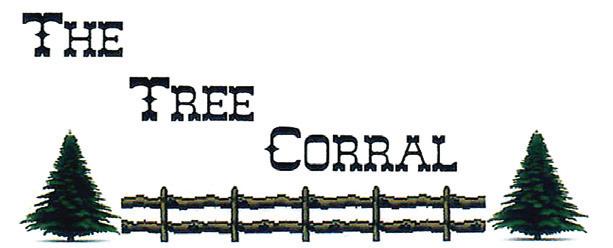


While other kids were riding two-wheelers, you were moving haybales with the John Deer . You’re a farmer. You’re ready for your own operation.
Ask about our no-fee, ultra-low interest Future of Farming mortgages and loans for young farmers.
Alliance Branch 780-879-3644
Daysland Branch 780-374-3951
Killam Branch 780-385-3731
Sedgewick Branch 780-384-3912
Hardisty Branch 780-888-2883

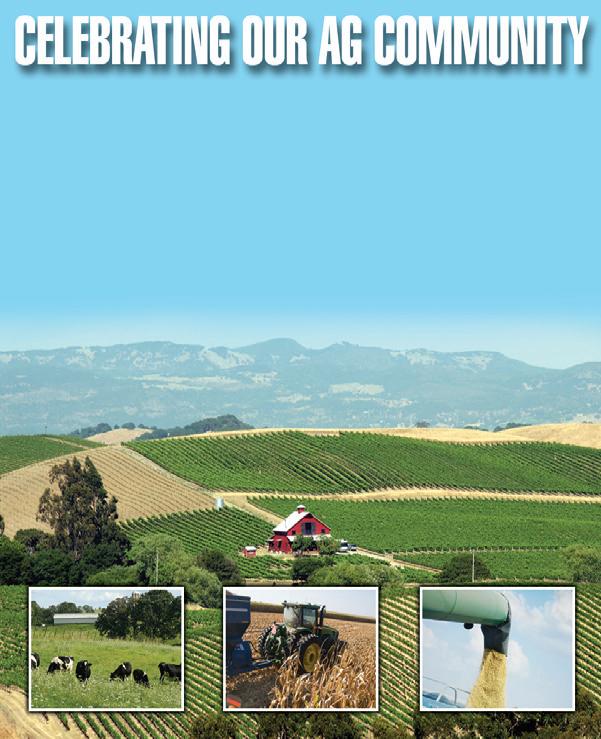
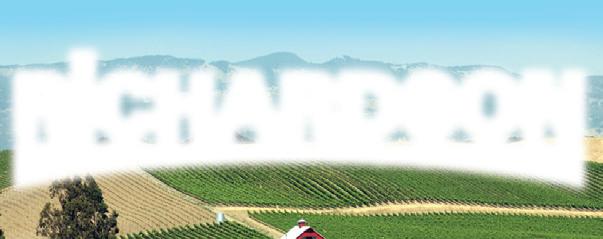

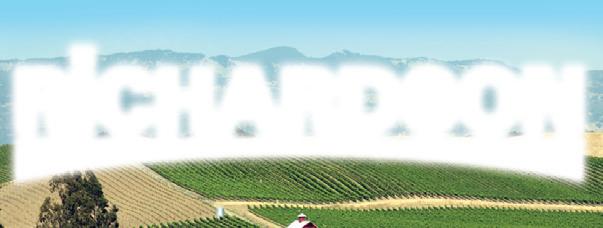











Kelsey Witham Staff Reporter
Established in 2004 and originally named Going Organic Network of Alberta, Organic Alberta represents over 660 organic producers and processors in Alberta, along with over 100 businesses across the organic community with the mission to represent, support, and grow Alberta’s entire organic industry. The organization holds training and informational workshops regularly across the province.
A recent conference was held in Nisku, running from Friday, February 28 to Sunday,
March 2.
“Organic Alberta has hosted this Annual Conference and Tradeshow since 2015. It brings together over 200 attendees, including farmers and ranchers, industry professionals, organic experts, and key stakeholders in the organic sector,” Small Farm Canada’s website said in promotion of the event.
“In 2025, we are delighted to collaborate with the Alberta Farm Fresh Producers Association to launch the Agri-tourism 2035 Growth Strategy. With over 25 speakers and multiple break-out sessions, the annual Organic
Alberta conference offers a fantastic opportunity to equip farmers, producers, U-pick berry growers and agritourism operations with the information they need to succeed while fostering valuable connections within the industry,” the website said.
The conference included Member of Parliamentfor the Edmonton Riverbend riding, Matt Jeneroux, who spoke on mental health awareness, along with the impact of tariffs, counter-tariffs and a team Alberta approach presented by Bianca Parsons, the Executive Director of the Alberta Food Processors Association.
Both Organic Alberta and Alberta Farm Fresh Producers Association held their AGM during the Nisku conference, covering topics to be explored in the upcoming year. Currently, less than 25 per cent of domestic demand for organic vegetables at retail is filled by Canadian producers. With the growing desire for organic products, more than 20 million Canadians are buying organic products weekly, Organic Alberta’s website says. There are nearly 5,000 certified organic farms in Canada and the number is rising as there is an increase in research and funding that is being distrib-
uted to the organic sector.
To help encourage new farmers to enter organic farming, Organic Alberta launched the program ‘Young Agrarians’ in 2015, funded by Peavey Mart’s Agricultural Community Grant. The program has been a successful initiative that helps grow the next generation of ecological farmers in Alberta who are looking to gain skills and knowledge by helping them navigate the opportunities and challenges of starting a farm. Farmer-to-farmer relationships begin to develop by networking at workshops and farm tours put on by the Young Agrarian program.




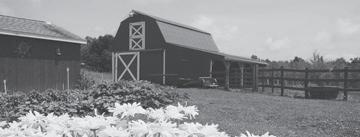




Tofield Ag





















































































BY JANA SEMENIUK
Michael Zeleny was in his 20s when he first immigrated to Canada in search of a new life during the early 1900s.
After first arriving in Vancouver, he eventually purchased 160 acres of land near Mundare for $3,700 in 1920. Soon after, he met and married his bride, Eva.
Little did he realize that over 100 years later, his descendants would not only still be working the land and calling it home, but the Zeleny name would be forever chiseled into history with an Alberta Century Farm and Ranch Award from the provincial government.
Last month Zeleny’s son, Clarence, 88, along with his wife Norma and their family were presented with the Alberta Century Farm and Ranch award at their home by Fort SaskatchewanVegreville MLA Jackie Armstrong-Homeniuk.
The award recognizes farms whose families have owned and operated the same land for 100 years or more.
Robb Zeleny, Clarence’s son, said he’s very proud of his family’s farming history being recognized with the award.
“It’s a proud feeling. Not too many farms can farm on the same quarter for that many years and live there too. Grandpa lived there, dad lived there, that’s (huge),” he said. “I think (dad) was happy about it. He didn't show too much emotion, but I'm sure he was proud of it.”
Zeleny said his grandfather was one of the first in the area to have power installed, and he farmed until 1961 when Zeleny’s father Clarence took over. Zeleny said his father introduced cattle to the farm in 1963 which had, up until then, been raising pigs, chickens and grain.
He said over time, the farm which had once encompassed 160 acres, grew at it’s peak to over 3,400 acres.
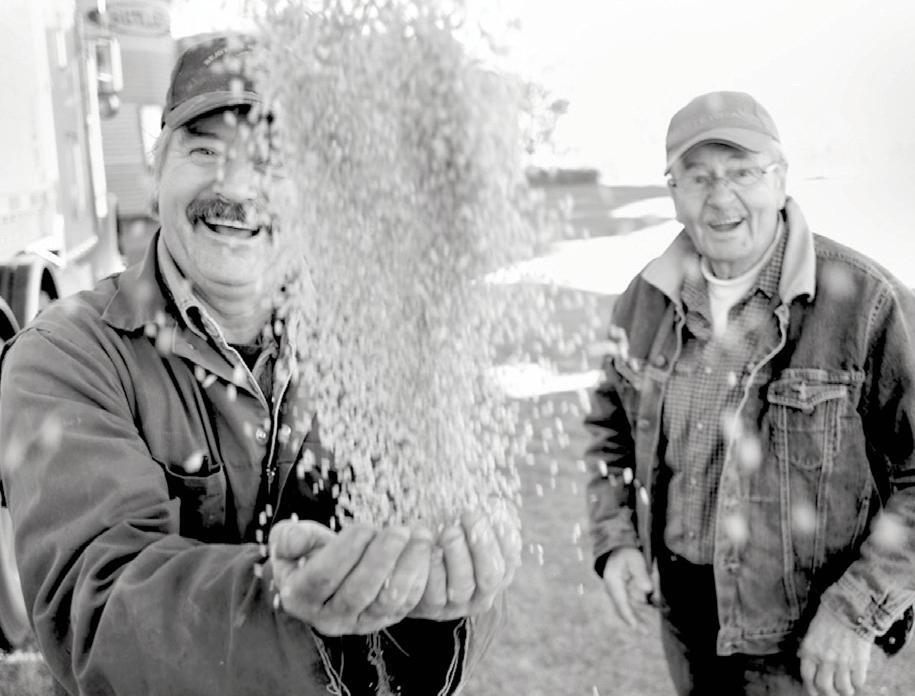
Zeleny’s memories of growing up on the farm with his two sisters Arlette and Shauna, include having egg fights with old eggs found forgotten in the barn, spending time with the family dog Rex, and feeding newborn cattle.
“Living on the farm was truly the best life a person could ever ask for,” wrote Zeleny’s sister Shauna in a letter.
“There are so many memories we had growing up that made us who we are today.”
Shauna shared a heartwarming memory in her letter of the special care she gave to the many cats who lived on the farm.
“One of my jobs was to pick eggs from the chicken coop after school, but we also had probably 20 cats on the farm which I loved.
There were days when there weren’t enough leftovers to feed those cats, so I decided they couldn’t go hungry. I made a decision to take the profit from the eggs and feed a few dozen a day to the cats,” she said.
“Dad couldn’t figure out why the chickens stopped producing, but I think he knows now.”
Zeleny’s other sister Arlette described how her parents encouraged each of the three children to raise a calf of their own and once it was time to sell, put the
money into their bank accounts. She said her parents also passed
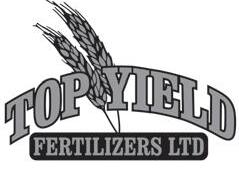
down the life lessons to their grandchildren.
“Dad and mom
looked after all nine grandchildren. All of them were instilled with life long learning lessons which we are all grateful for,” she said.
Meanwhile, Zeleny credits his son, Kyler, for the award happening at all.
“Kyler, my son, did all the paperwork. He's the one that got all the wheels going, did paperwork, phoned the city, phoned Jackie and got the wheels going,” he said.“
Continued on Page





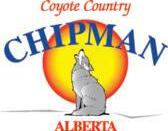






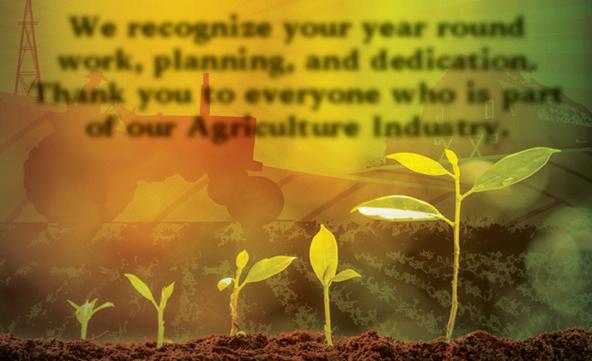

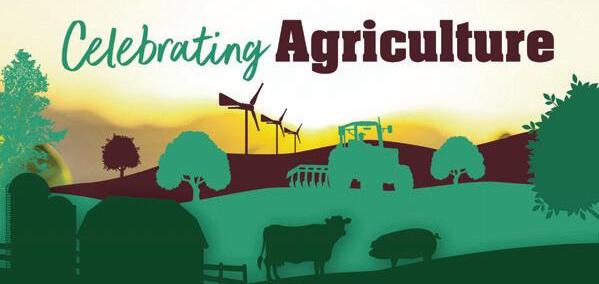










On March 19, the Red Deer RCMP Crime Reduction Team executed a search warrant on a residence in the Rosedale neighbourhood of Red Deer. As a result of the search warrant, police have seized approximately 800 grams of cocaine, packing materials, a digital scale and approximately $14,495 of Canadian currency.
A youth, aged 16, was arrested on scene and was found in possession of 16 pre-packaged bags of cocaine and two spitballs of cocaine.
The youth, who cannot be named under Youth Criminal Justice Act, has been charged with the following offences:
• Possession of a controlled substance for the purpose of trafficking
• Proceeds of crime over $5,000
• Illegal possession of government documents
The youth was taken before a Justice of the Peace and was released on a Release Order with conditions.
They are scheduled to appear in court on April 3, at the Alberta Court of Justice in Red Deer.
“This arrest is part of our ongoing efforts to disrupt street level drug trafficking within Red Deer. Drug trafficking poses a threat to the safety and well-being of everyone, and we are committed to holding those involved responsible,” said Sgt. Robert Daisley. "We encourage anyone who sees suspicious activity to report it. If you see something, say something”
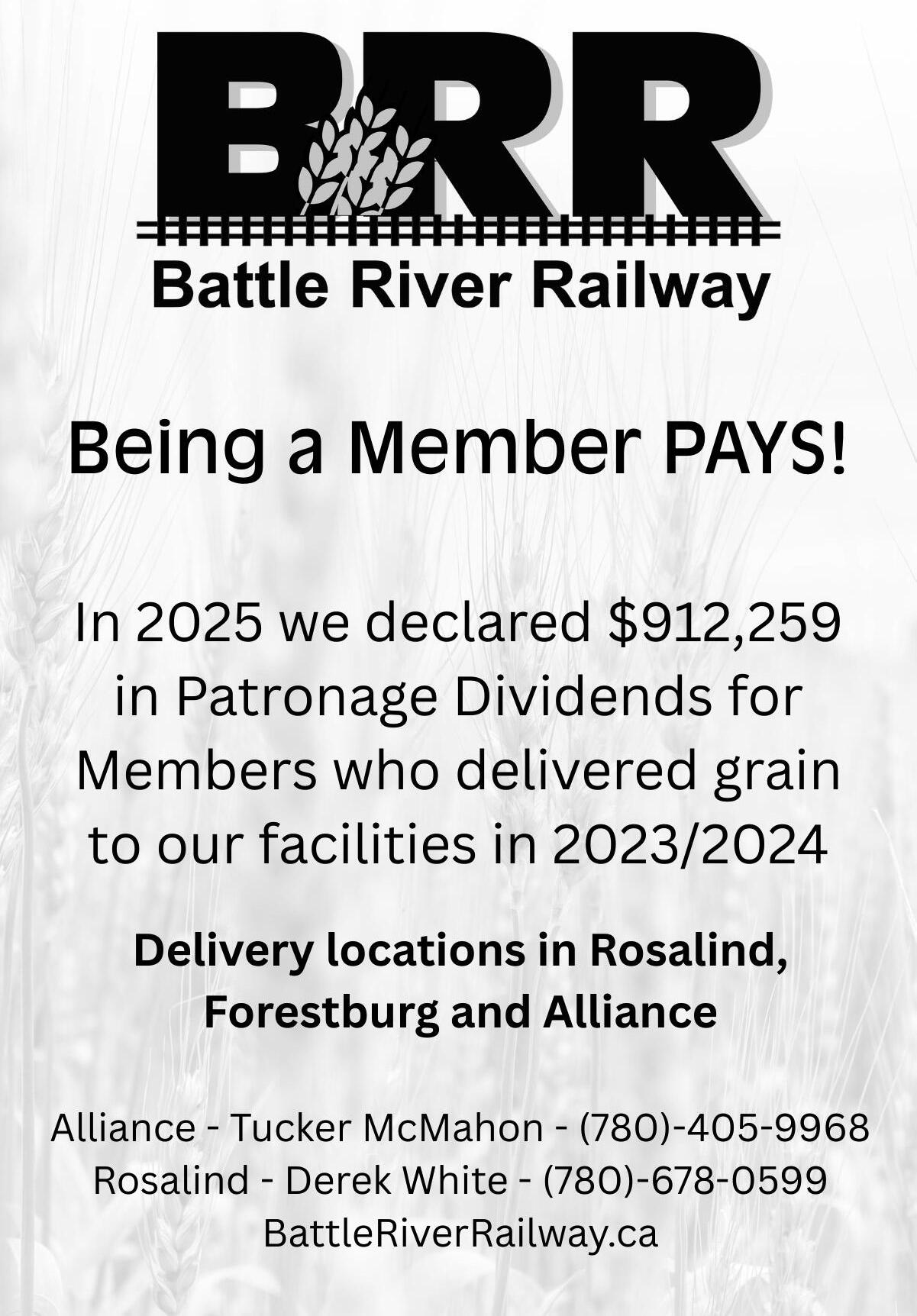


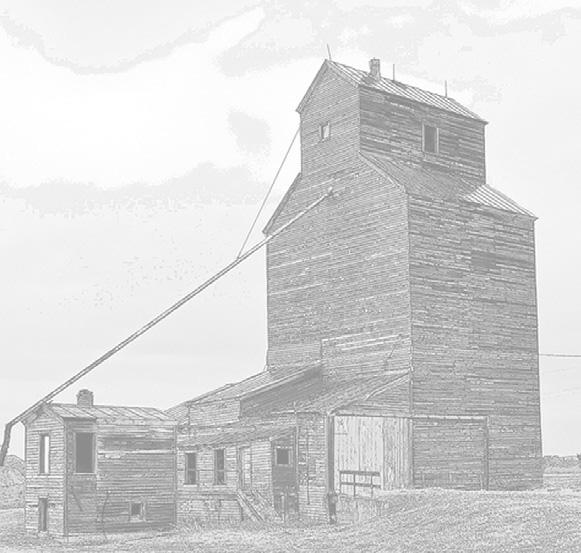


Wheat:
CWRS - AAC Brandon - Improved Rated MR for FHB resistance
- Most widely grown CWRS variety in Western Canada for 5 years
CWRS - AAC Wheatland VB
-Wheat Midge tolerant
- Very good lodging resistance
CWSWS - AC Andrew - Great silage option
-In demand by milling and ethanol industries
Yellow Peas:
CDC Canary - Improved standability
-Early maturity
-Higher Yielding
Faba Beans:
CDC 219-16 - Zero Tannin
- Seed is smaller than Snowbird, larger than CDC Snowdrop
6-Row Feed Barley:
AB Advantage - Improved plump and bushel weight
- Smooth awned
-High grain and forage yield
2-Row Malt Barley:
CDC Copeland - Strong demand by malting companies
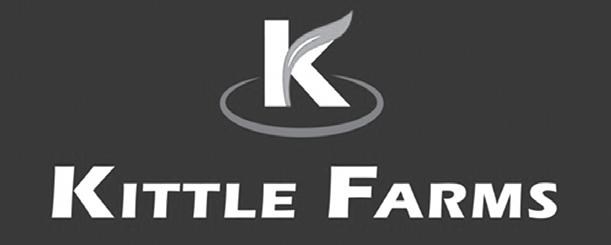







































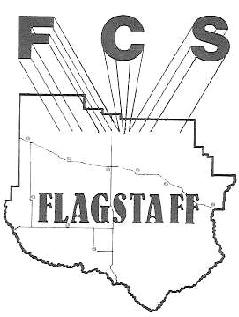









































































































































































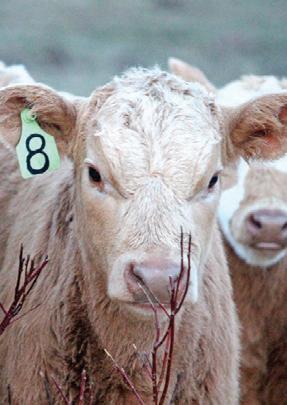
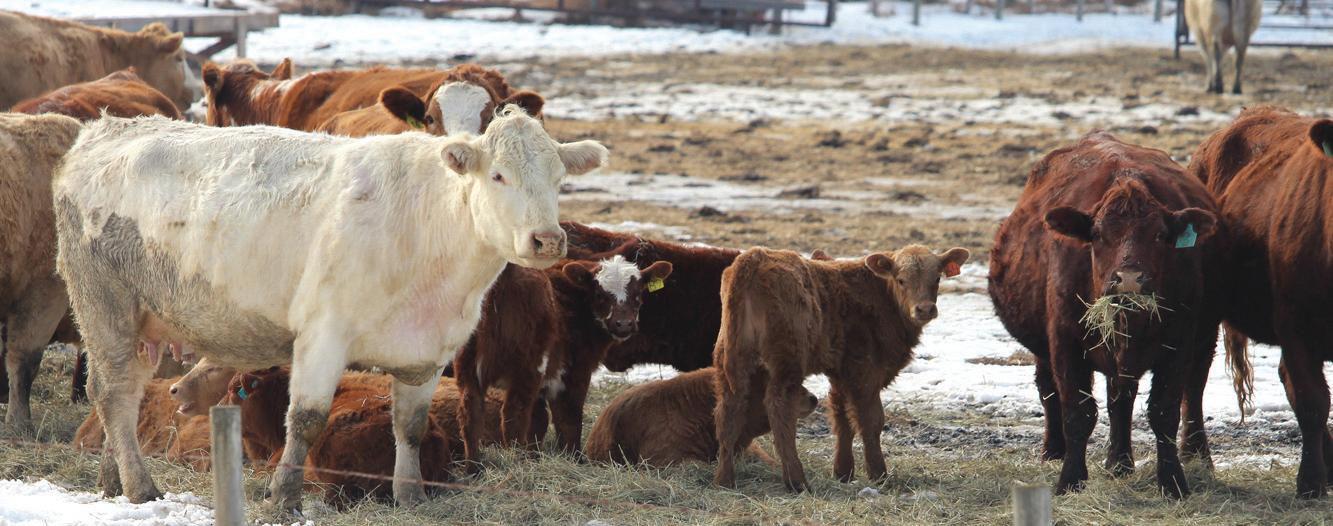











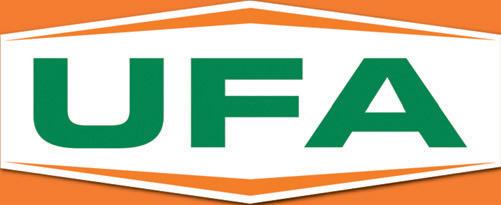

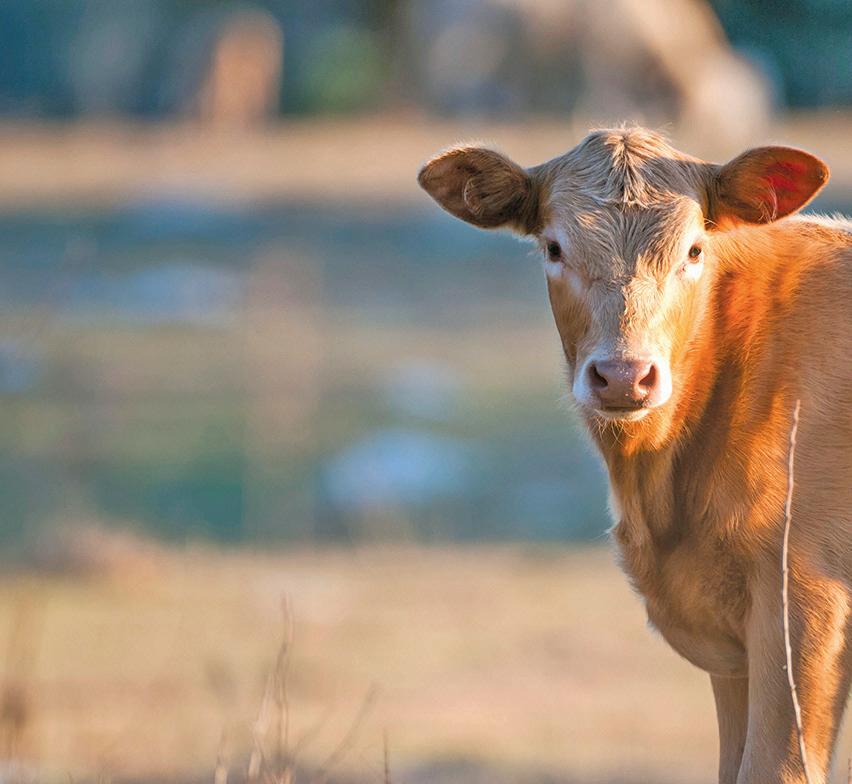










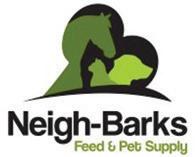


















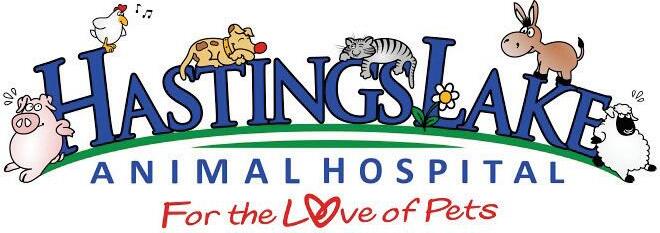

Sale Starts on April 11th & Closes on April 15th, 2025 - Lafond, Alberta
Directions: From Hwy #29 Turn Right on Hwy #646, Go 5.6 Kms East to Rge R R105, On the North West Side of the Road – Green Sign #105
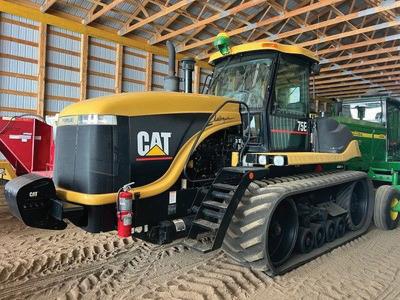
Tractors

2001 Cat Challenger 75E 4wd Tractor
Showing 4456 Hrs, Cat 3176 Engine, 360 Hp,
10 Speed Power Shift Trans, 2 Reverse, New Tracks Last Year, GPS Ready
JD 4640 2wd Tractor - Showing 7816 Hrs (Original), 2 Hyd, Big 1000 PTO & Duals
IHC Hydro 84 2wd Tractor - Showing 1569 Hrs (Original), IHC 2250 FEL, Forks, 3pth
2010 JD 9770 STS Combine - Showing 2451 Engine & 1546 Thrashing Hrs, Bullet Rotor, Front Duals, Hopper Topper, JD 615P P/U Header, Green Lighted, Shedded & Integrated GPS
JD 4895 25’ Swather - Showing 1228 Engine & 862 Cutting Hrs, 25’ Honey Bee Header, ATU Steering Box, Triple Delivery, Single Knife & Auto Steering
JD 635D Straight Cut Header w/ Cross Augers & Transport
Renn RGB1020 Grain Bagger - Only 4 Bags
Renn 3024 Conveyor
Grain Maxx 6395 Telescoping Swing Auger
WheatHeart 8”x46’ Auger w/ Kohler Pro 30 Engine, Hyd Mover & Always Shedded Westfield UTX44 U-Trough Auger w/ Kohler 38Hp EFI engine
Westfield 8”x51’ PTO Auger
Brandt 8x52’ Auger w/ Honda 24Hp Motor
Walinga Agri Vac Grain Vac
Asst Keho 7 1/2 Hp Air Fans

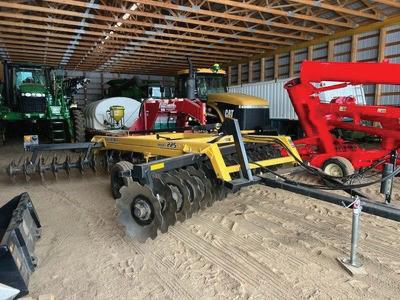


2018 Dodge Ram 5500 4x4 Flat Deck Truck Showing 78,000 Kms, 6.7 Ltr Cummins Diesel Engine, Auto Trans, Deleted, Flip Up Hitch, 720 Ltr Slip Tank/Pump, New Tires & 8x11’ Deck
2008 Freightliner FL D120 Classic T/A Truck
Showing 602,350 Kms, Detroit 60 Series 515
Hp Diesel Engine, 13 Speed Eaton Fuller Trans & 46 Rears
1999 Freightliner Classic T/A Hiway Truck Showing 1,347,000 Kms, Detroit 60 Series 500
Hp Diesel Engine & 15 Spd Eaton Fuller Trans
1992 Freightliner Fl T/A Service Body Bucket Truck w/ Showing 189,604 Kms, 2846 Hrs, 13 Speed Eaton Fuller Trans, Reach All Bucket & Winch
2025 Wilson Commander Tridem Grain Trailer w/ Electric Tarp & Opener, Only Has 300 Original Kms, Double Hopper, Auto Inflate, Always Shedded & Michaels Tarp System
2013 Lode King Super B Grain Trailers w/ Michaels Tarp System, Double Hopper, Air Scales, Lift Axles, Shedded, Low Kms
1999 Cascade T/A 32’ Grain Trailer (Fert) w/ Michaels Tarp System
Manac 53’ T/A Trailer w/ Sliding Axle
2012 Trail Pro 16’ Tridem Gooseneck Dump Trailer
Fleetneck 30’ T/A Gooseneck Trailer
Cargo Mate 16.5’ T/A Enclosed Trailer w/ Fold Down Rear Door, Only 1000 Kms

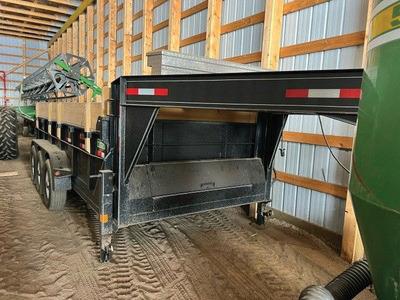
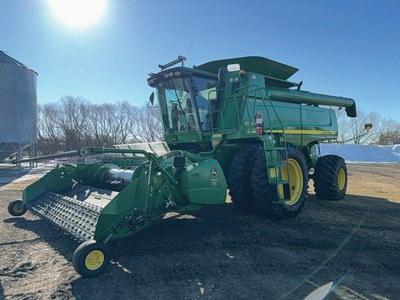
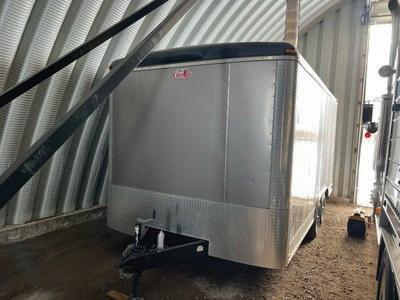
Rimbey & Hwy
Toll Free 1-855-783-0556
Email: abolson@telusplanet.net - Homepage:

JD 4830 100’ High Clearance Sprayer
Showing 1536 Eng & 543 Spraying Hrs, JD 2360 Display, Starfire 3000 Globe, 1000 Gallon
Stainless Steel Tank, Crop Dividers, Floatation
Tires, Green Light - Winter 2023
2014 JD 1870 40’ Conserva Pack Air Drill w/ JD 1910 430 Bu 3 Comp Air Cart, Auger is Unused, Dual Shank, 3 Yr Old Paired Row Openers & Double Shoot
Kello-Bilt 225 16’ Offset Disc
Bourgault 7200 60’ Heavy Harrows
Flexi Coil 50’ Cultivator
Construction
Cat 416 Series 2 4x4 Extend- A-Hoe Rubber Tire
Back Hoe - Showing 5760 Hrs & 4 in 1 Bucket
Recreational
1993 Kustom Coach 265 T/A 26.5' 5thWheel Travel Trailer
Polaris Magnum 330 4x4 Quad
Miscellaneous
Wolverine 72” Skid Steer Brush Cutter
Schulte Jumbo RS320 54”(w) Rock Picker
40’ 5 Door High Cube Sea Can
Starfire 3000 GPS
3000 Gallon Tank
Large Assortment of Shop Tools
Owners Phone Number: 780-645-0306
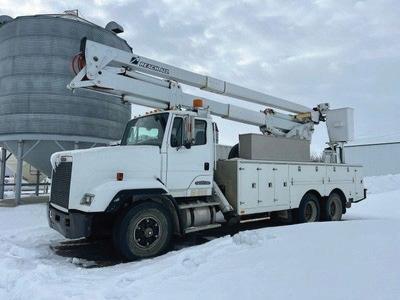
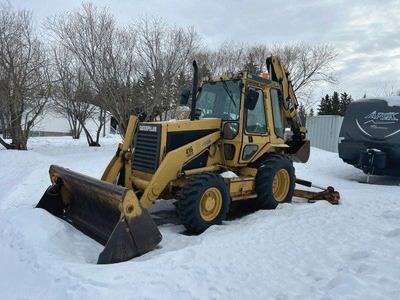

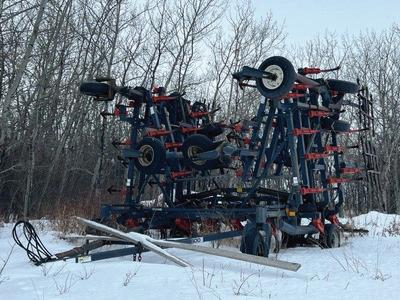

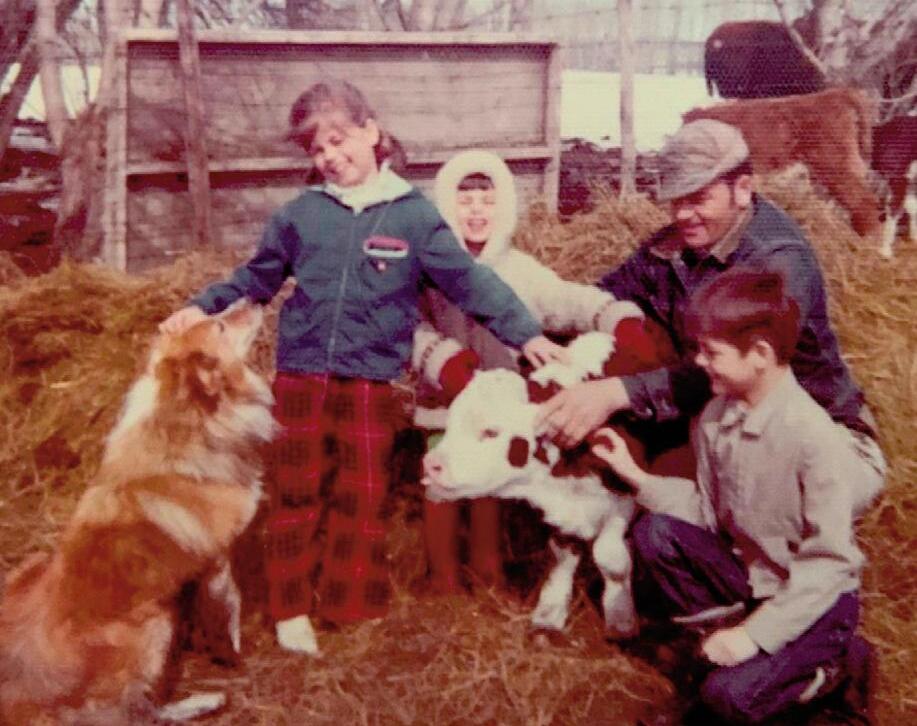





two quarters of dad’s,” he said adding there is still interest in farming from his sister’s families.
Continued from
Continued from Page 24
“He wanted it for Christmas, but Jackie just couldn't get there in time, so we gave it to (mom and dad) just a few weeks ago. I really appreciate Kyler doing this, because if it wasn't for him, we would have never have had this award.”
Kyler, a photographer and story-teller, has published three books so far on his small-town rural observations, and last Aug., Maclean’s magazine wrote an article on Kyler’s 2023 anthology ‘Bury Me in the Back Forty’.
The book chronicles small-town Mundare through photos taken by Kyler over a nine-year period.
Today, Zeleny said his dad was still farming with him up until last year. He said his father, who by nature is a gogetter, is starting to slow down.
“Dad was farming with me as of last year, no problem, 88 years old, and then all sudden, his knee (gave out) and he can't move around. It's bothering him, because he's a type of person that's got to go out and feed the cats and get the mail and whatnot, and he can't do that,” he said.
As far as the future of the Zeleny farm goes, Zeleny said his part may end when he retires.
“At peak time, we were farming 3,400 acres, and we had 300 animals in the yard, but we don't do that now, because we're slowing down. Dad sold his cattle, I sold my cattle, and now I am farming 1500 acres with
“It’s a proud feeling. I mean you’ve got three generations of Zelenys farming on the same quarter. I have a son, but his interests are not in the farm so it’s probably going to stop when I retire. It was a pleasure farming with my dad all of these years.”
The farm’s original owners, Mike and Eva Zeleny, both passed away months apart in 1972; Eva first at the age of 77 on Feb. 4 and Mike on May 19 at the age of 82.
According to the province’s website, the Century Farm and Family Award program began in 1992 and more than 1960 family farms have been recognized since its inception over 30 years ago.









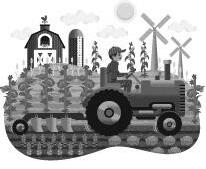



























Joe Konecny Local Journalism Initiative Reporter
The Government of Canada’s 2023 Statistical Overview of the Canadian Honey and Bee Industry illustrates the size and impact of bee farming.
“Beekeeping is an important agricultural industry in Canada, producing honey and other hive products, and delivering valuable pollination services to farmers of orchard fruits, many berries, vegetables, forage, and the production of hybrid canola seed,” according to the report.
In 2021, Agriculture and Agri-Food Canada (AAFC) estimated that the total annual economic contribution of honeybee
pollination was about $3.18 billion. When honeybee pollination of hybrid canola seed is also considered, the total estimated contribution is $7 billion per year.
The number of hives across the country increased in 2023 to 794,341, about 3.6 percent more than the previous year, consistent with the previous four years.
The volume of honey produced in Canada in 2023 increased 23.4 percent from a year earlier to 91.8 million pounds. The total value of the national harvest increased 8.2 percent over the previous year to $277 million, about 22 percent higher than the average of the previous four years.
About 64 percent of Canadian honeybee

colonies are in the Prairie provinces – Manitoba, Saskatchewan, and Alberta – however the majority (59 percent) of beekeepers with one or more honeybee colonies operate in Ontario and British Columbia.
Ontario and B.C. beekeepers manage 23 percent of colonies in Canada, however, the Prairie beekeepers accounted for 81 percent of national honey production in 2023, totaling 74,222 thousand pounds. Nationwide, 91,807 pounds were produced.

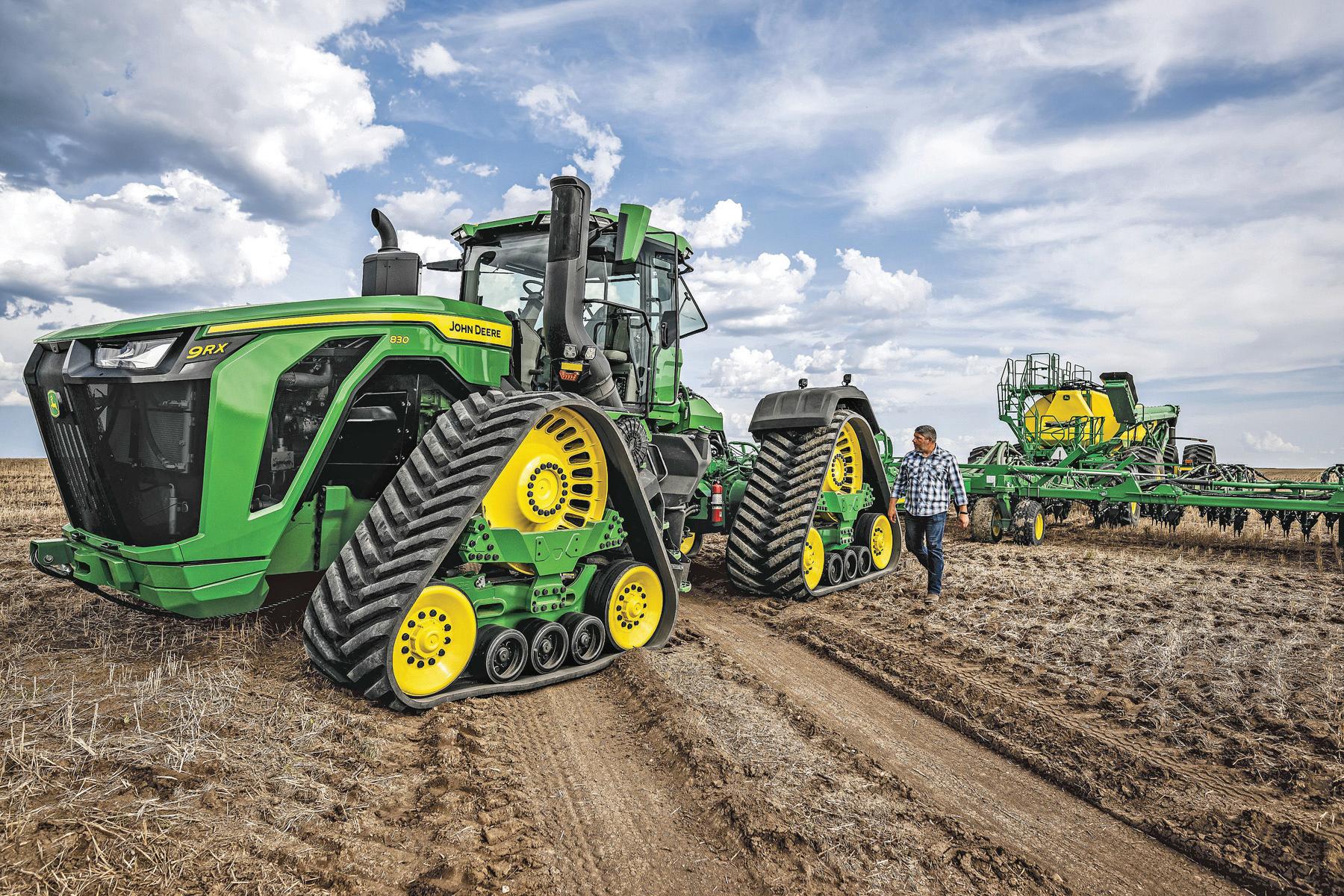



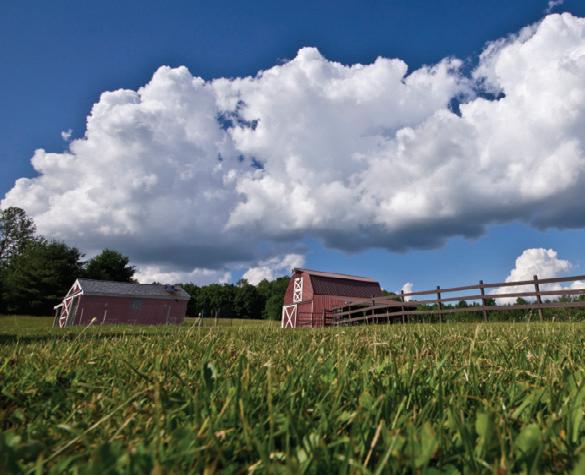

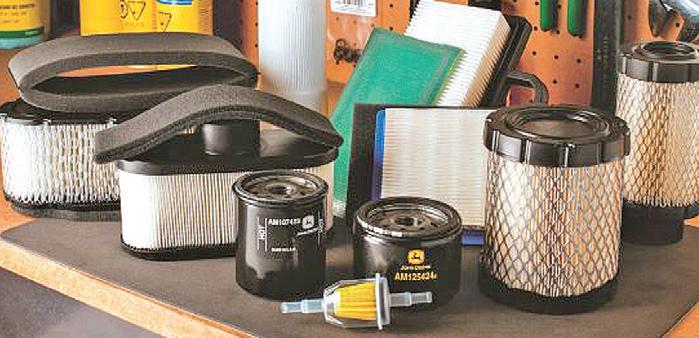
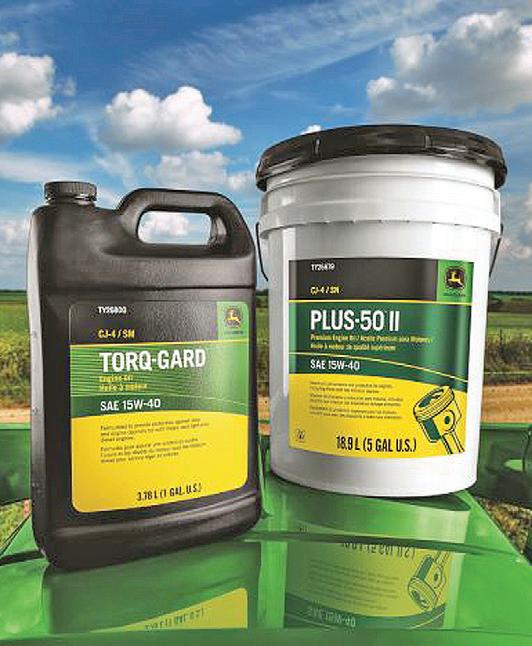
NTCF grant funding must by completed by March 2028 for reporting.
“Our main goal in Forestburg is to have the site development-ready,” Enright says, adding that the Village is a great partner in that by providing road access.
“We’ve got two years to market that development. Different clients have different needs, and might want a different configuration for a rail line. We are optimistic about rail accessibility bringing customers to the Forestburg development.
“We are on that stage of growth where we can be seen as a safe place to invest with successful partners.”
Enright says BRR’s expansion of services really follows the Federated Coop model, where diversification enhances profit for shareholders. “We are owned by our members, so our profit goes back primarily to those who invested in the short line, and those who use it.
“The shortline industry has passed the ‘prove it’ stage into established business and growth stage.”
That’s where BRR has an advantage over other shortlines, in that the rail quality in this shortline is superior to many other branch lines.
And growth has been very important to BRR and its members, he says. “In 2015 we started moving oil and grain, then oil stopped and there was a poor grain crop. Trying to reduce costs and manage through that was a lot less fun than figuring out how to grow and bring on new employees and new customers.
“We’ve had very committed shareholders. The vast majority of money put in were through investment shares. But we have committed shareholders, who feel proud to receive dividends and support a local business.”
vest locally.
“To have an avenue here where locals can invest locally turns into people who today are very proud to be shareholders.”
Overall, Enright says,
“The sooner the grain is on rail, the better it is for road authorities throughout the province,” he says.
“The Province spends a whole lot of money building and maintaining roads and almost zero money supporting rail.”
Enright says agreements with the Province put the entire cost of maintaining crossings on BRR’s shoulders. That includes four lighted crossings on Secondary Highway 855, and Highways 36 and 53, and the old 36 near Galahad, along with 53 uncontrolled crossings.
He says the Province’s Locomotive Fuel Tax went up March 1, some-
thing that hits a shortline harder than the big players.
BRR also supports the Friends of the Battle River Railway, who own a passenger car and open air car and run different tourism excursions throughout the year.
At Christmas, BRR partners with them to run local excursions by donation which they then donate to the local Food Banks. “We see that as a positive local interaction.”
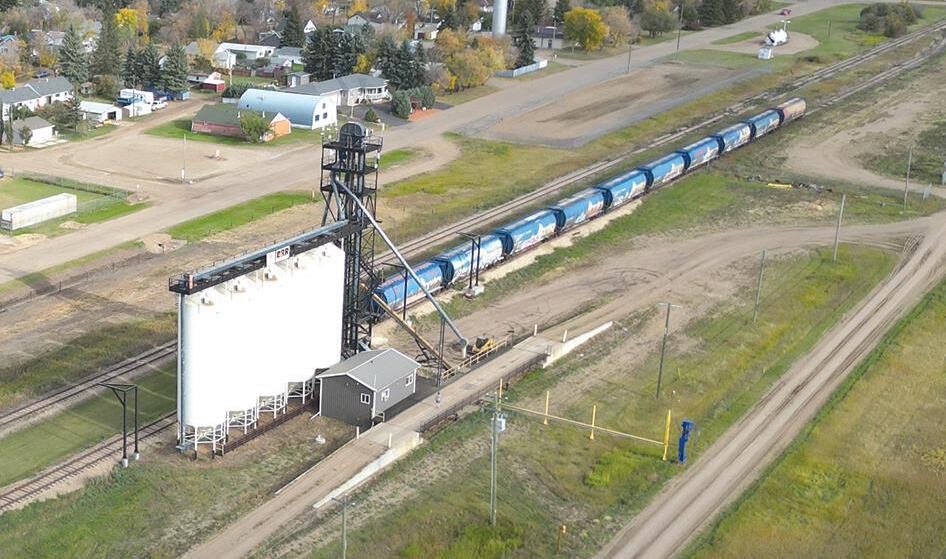


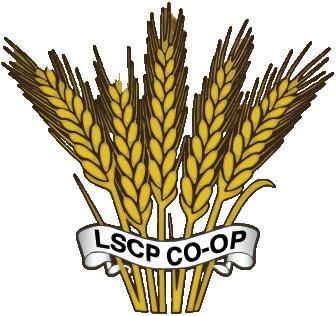
P.O. Box 123, Lougheed, AB T0B 2V0 Manager: Jeremy Simpson Phone: 780-386-3771
Email: lscp@xplornet.com Website: lougheedprocessing.ca
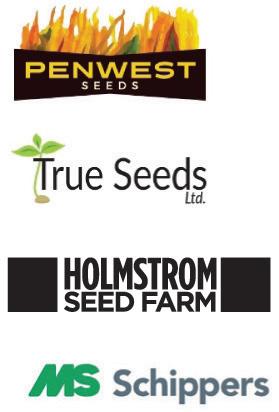
He says, “The new generation co-op model works very well in rural Alberta,” he says.
“In general we don’t lack capital or investment, we lack the ability to in-


